Is 3 days in Florence a good amount of time to explore the city? Absolutely. Read on to discover what you can see and do in Florence in 3 days.
Florence, the cradle of the Renaissance, is a captivating city, home to some of the world’s most exquisite art and architecture. If you are prone to feeling awe, Florence will move you to tears.
But Florence is not merely a city frozen in time; it’s a living, breathing museum where modern life intertwines with its illustrious past. So, as you explore the city, make sure to pause and enjoy the sumptuous Tuscan cuisine, sip world-class wines, and immerse yourself in the city’s lively markets and squares.
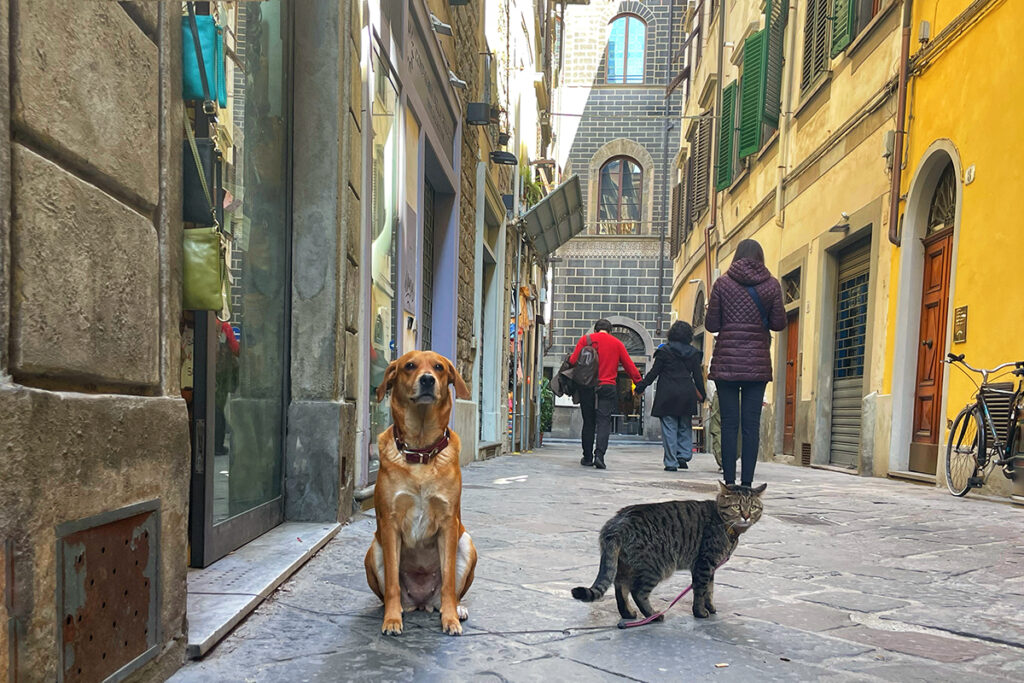
There is so much to see and do in Florence that it can be difficult to decide how many days in Florence is enough. On the one hand, no amount of time in Florence is too much. On the other, you can see the very best of Florence in 1 day.
Ideally, I would recommend 5 days in Florence, especially if you want to take a day trip to the Tuscan countryside and visit some medieval towns. But 3 days in Florence is a good compromise.
In 3 days in Florence, you have enough time to explore the key Renaissance monuments and see the spellbinding art of Leonardo da Vinci, Michelangelo and other Renaissance masters in the historic centre and then venture across the Arno River into the Oltrarno district, home to a Medici Palace, the most famous chapel in Florence and some the best artisan shops in the city.
The most important thing you can do to maximize your time in Florence is to buy all the tickets to the museums and monuments in advance. Yes, it takes careful planning since many attractions have timed entry, but this will save you literally hours of standing in queues. And depending on whether you visit Florence in winter or summer, some attractions can be sold out closer to your dates.
If you do find yourself in Florence needing a last-minute ticket to a sold-out museum or a palace, you can try your luck with third-party providers like Tiqets or GetYourGuide.
3 Days in Florence Itinerary at a Glance
Day 1: Duomo Square, Michelangelo’s David, Medici Quarter, Signoria Square, Ponte Vecchio
Day 2: Uffizi Gallery, Palazzo Vecchio, Santa Maria Novella Church & Pharmacy, Santa Croce Square, Sunset View over Florence
Day 3: Pitti Palace & Boboli Gardens, Brancacci Chapel, Basilica Santi Spirito, Artisan Shops, wander the streets of Florence.
Where to Stay in Florence
Not surprisingly, there are plenty accommodation options in Florence to suit any budget. Accommodation prices are generally lower during the shoulder seasons (Feb-March and Oct-November).
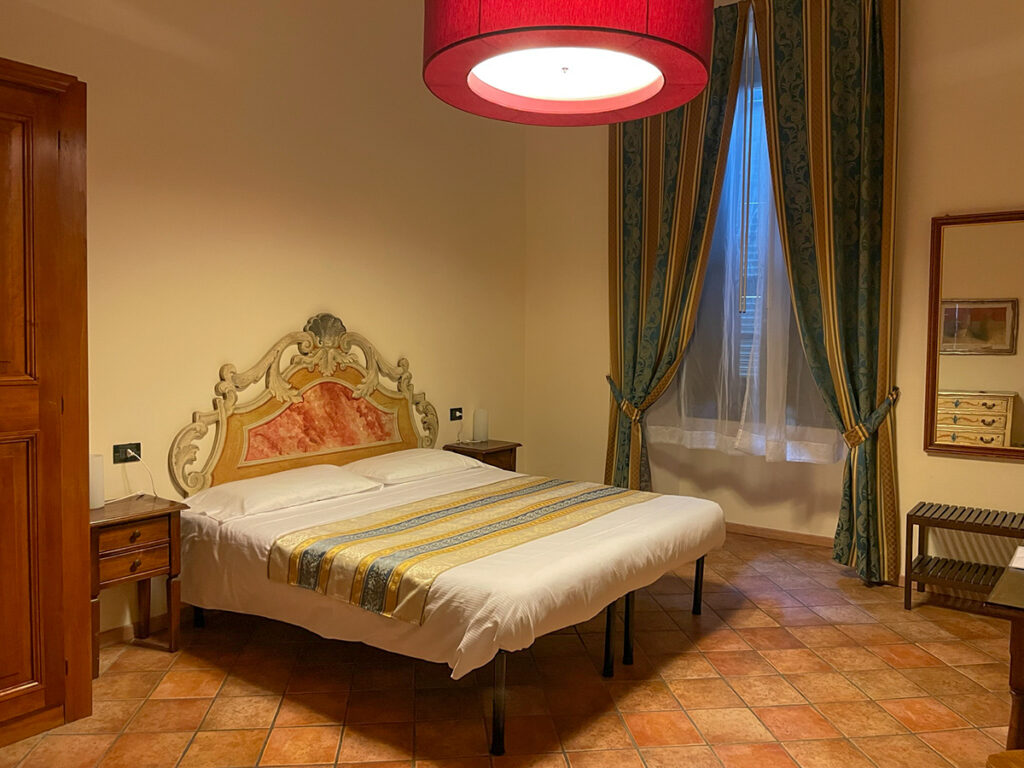
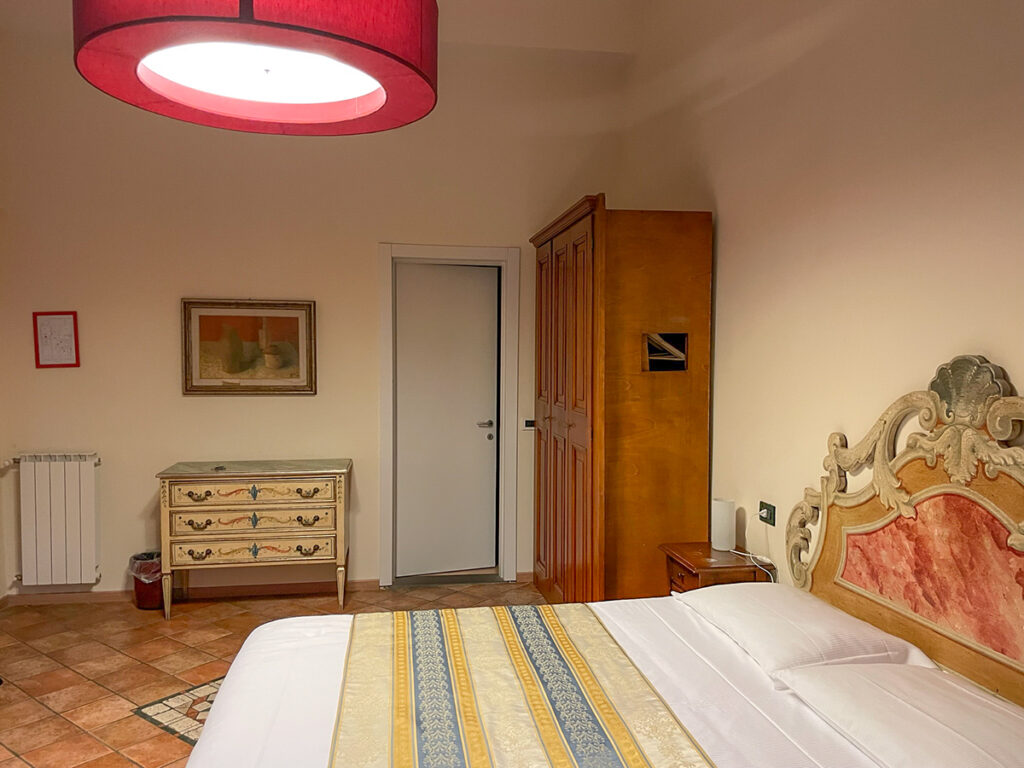
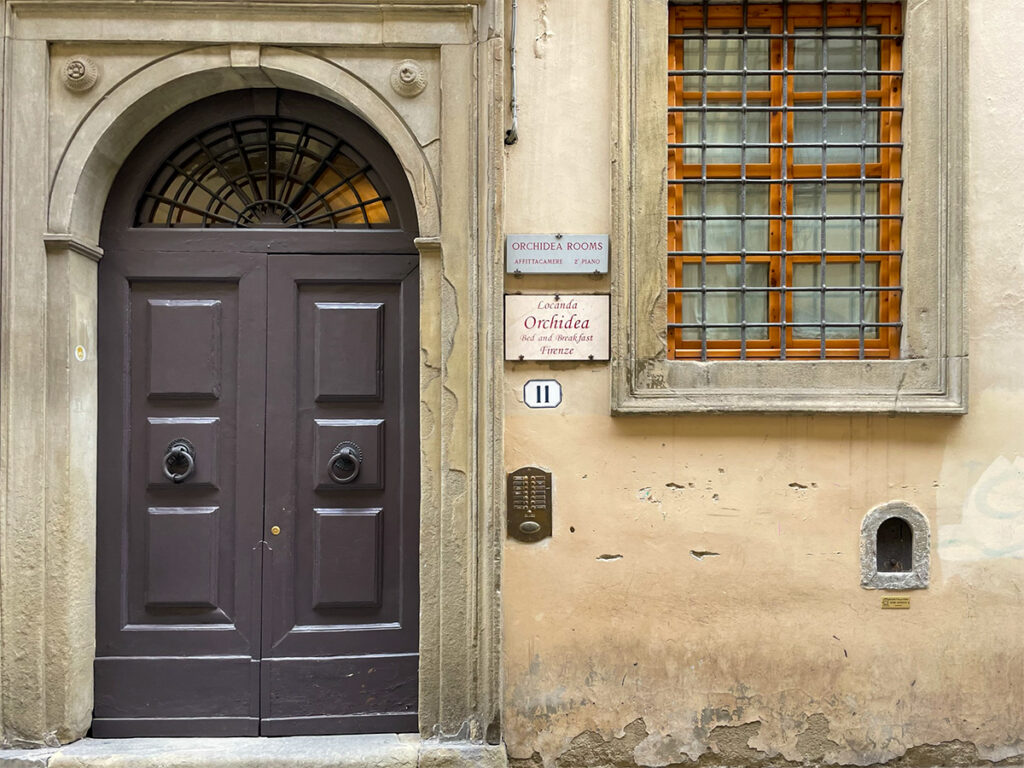
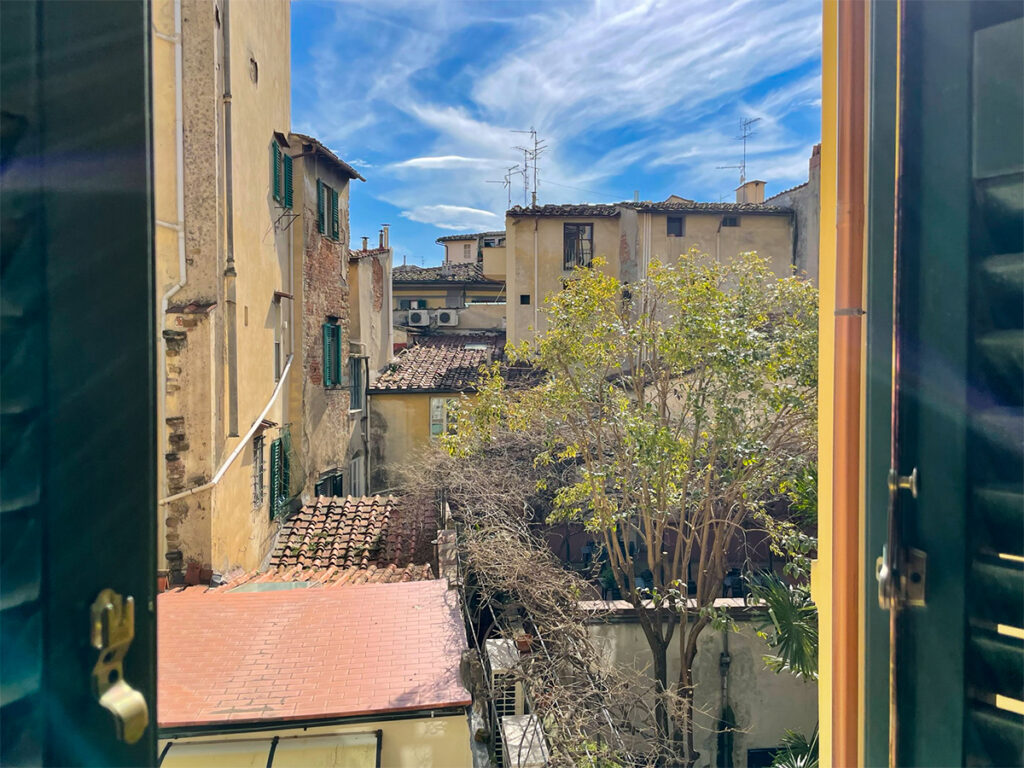
I spent almost two weeks in Florence staying at Locanda Orchidea, and I couldn’t recommend this charming B&B highly enough. Located in a 13th-century historical palace, Torre di Donati, that may have belonged to Dante’s family, Locanda Orchidea is full of character.
And it is conveniently located within a 5-minute stroll to Piazza del Duomo and a 10-minute stroll to Piazza della Signoria. Piazza di San Lorenzo and Santa Croce are within a similar distance. This means that if you feel a bit weary or have some shopping to drop off, you can easily detour to your hotel from anywhere on this itinerary.
3 Days in Florence: Day 1
Spend your first day in Florence familiarizing yourself with the city. Explore the Duomo Square, climb the Duomo Dome and enjoy the bird’s eye view of Florence, see Michelangelo’s David, visit the old Medici Quarter and stop for lunch at San Lorenzo market. In the afternoon, stroll through the heart of Florence to Piazza della Signoria and on to Ponte Vecchio.
Piazza del Duomo and the Duomo Complex
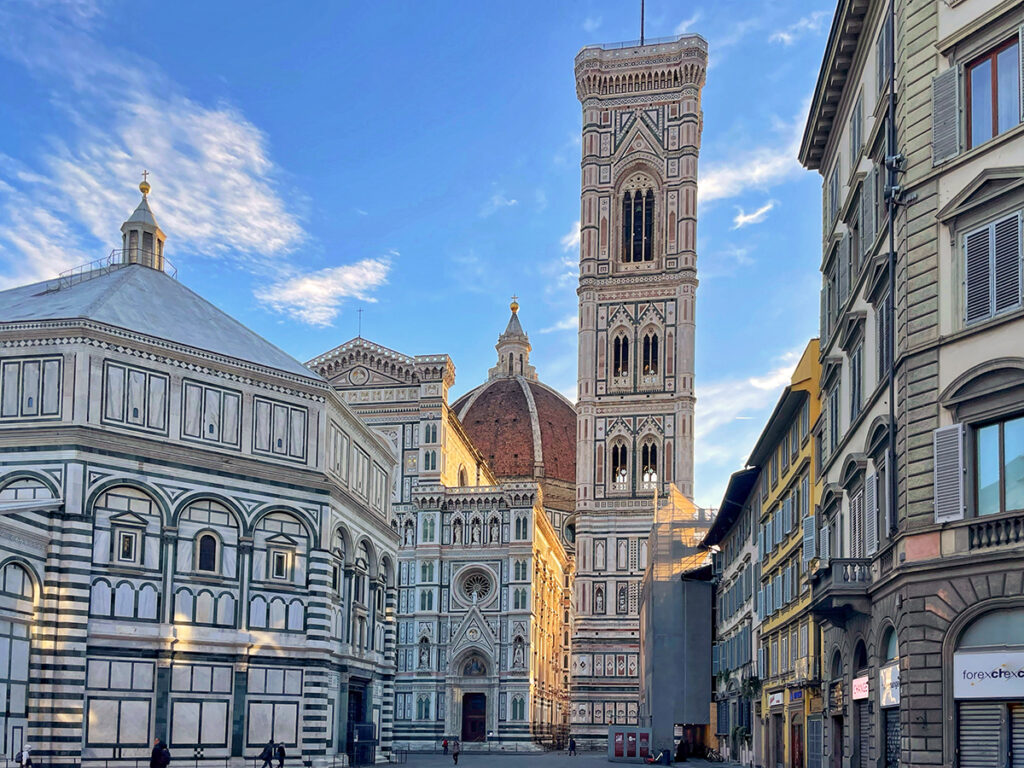
- Time to visit: 1-3 hrs
- Tickets: Duomo website
- Best tour: Skip-the-line entry and dome climb
Start your first day in Florence by visiting the Duomo – one of the most recognizable buildings in Europe. Formally called Cattedrale di Santa Maria del Fiore, the Duomo is more than one building – it is an entire complex.
The Duomo Complex comprises the Cathedral itself with Brunelleschi’s famous dome, the 85-meter-tall bell tower or Giotto’s Campanile, the Baptistery, Santa Reparata – an ancient cathedral underneath the Duomo, and the Duomo Museum that holds all the original artworks from the complex. The Duomo Museum is the building where Michelangelo worked for three years, carving his famous David from an enormous slab of marble. So you are literally walking in his footsteps there.
There are plenty of options for exploring the Piazza del Duomo and the Duomo Complex. You can simply explore the buildings from the outside. The cathedral is enormous, so you can meander around it and admire the Campanile and the magnificent Gates of Paradise on the Baptistry (the bronze doors that face the cathedral).
But if you are reasonably fit and don’t mind narrow staircases and heights, you should really climb the dome of the Duomo. The dome itself is a masterpiece of Renaissance architecture.
For a long time, the cathedral stood with a gaping hole in its roof because the brightest minds of the time could not figure out how to build a dome this big. Until Filippo Brunelleschi came along and, with support from Cosimo di Medici, designed his ingenious dome, the largest ever built at the time, in 1456.
And as you can imagine, the views of Florence from the top of the dome are to die for. Of course, if you want the view of the dome, you’ll need to climb another 418 steps to the viewing platform on Giotto’s Campanile.
Duomo Tickets & Tours
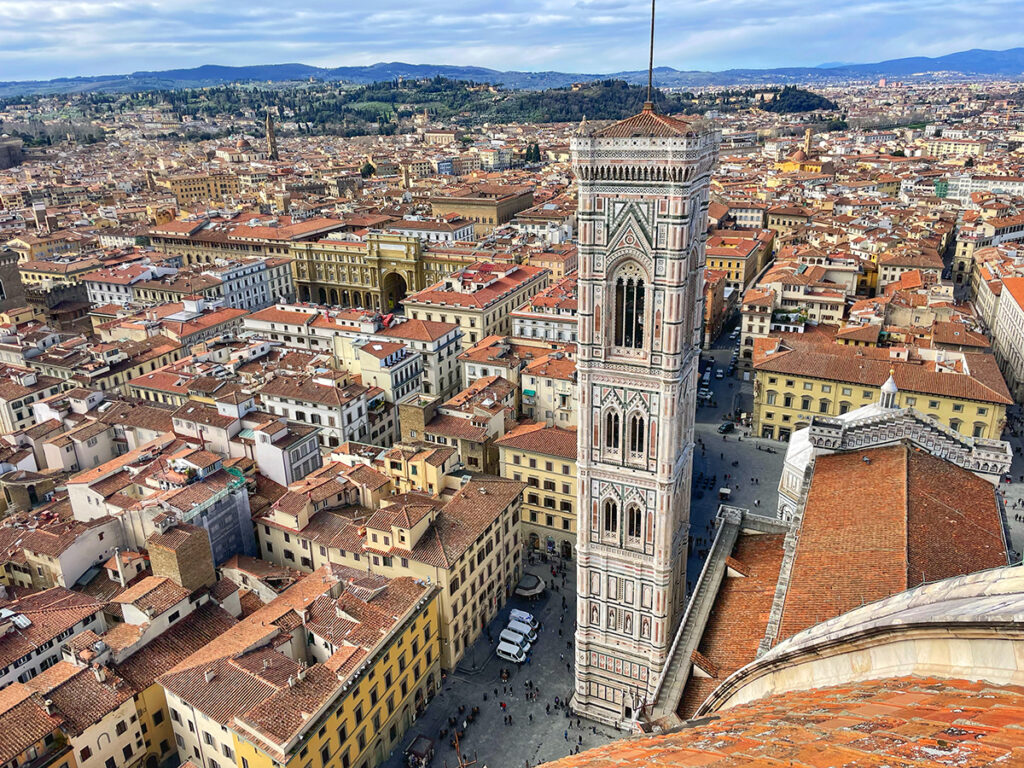
The tickets for the Duomo complex are not entirely straightforward, so you’ll need to be prepared. The entrance to the cathedral is free, meaning there are no skip-the-line tickets for it. And this includes Santa Reparata as well. The only way to avoid spending 1-2 hours in the queue is to book a skip-the-line ticket that includes the dome climb.
Alternatively, since you have 3 days in Florence, if you wish to visit other monuments in the complex, consider purchasing the Brunelleschi Pass from the official cathedral website. The pass gives you access to all monuments of the complex, and it is valid for 3 days. Since you are spending more than 2 days in Florence, this pass is good value.
If you are looking for something a little extra, I highly recommend the tour that includes exclusive access to the roof terrace so you can see the dome and the beautiful roof up close. The tour includes a visit to the Duomo museum so you can see the real Gates of Paradise (the ones on the baptistery are a copy) as well as Michelangelo’s unfinished Pieta, Donatello’s statues and other great works of Renaissance art.
Then, explore the rather plain interior of the cathedral before climbing first to the roof terrace and then to the top of the dome. The tour lasts between 2.5 and 3 hours. Make sure to keep your ticket if you want to climb Giotto’s campanile and visit the Baptistery later (the tour effectively includes the Brunelleschi Pass).
Academy Gallery
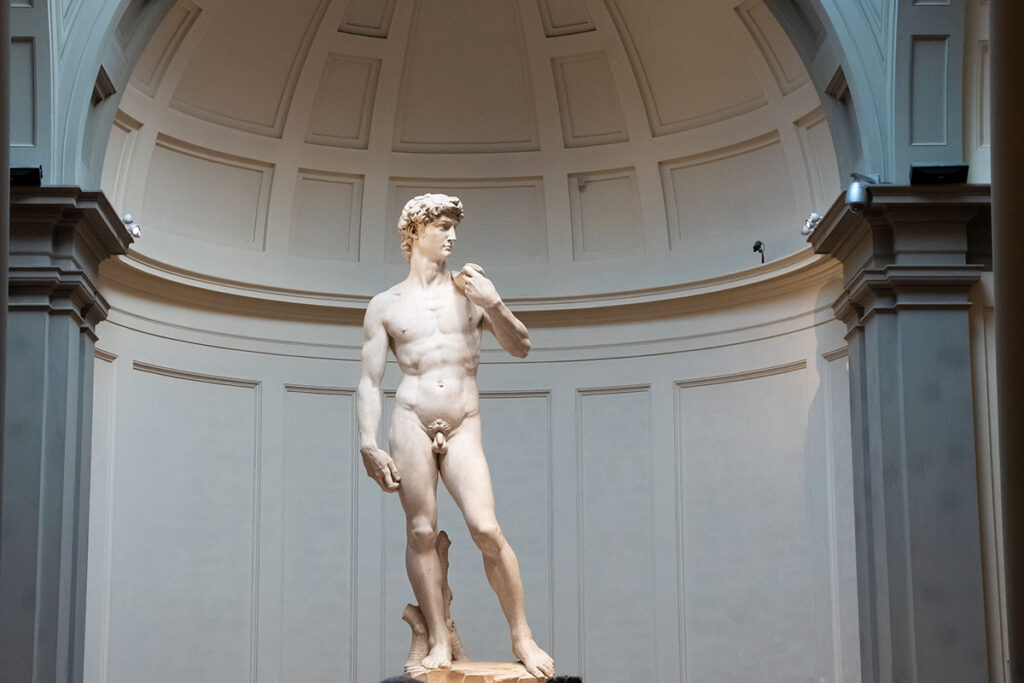
- Time to visit: 1 hr
- Tickets: Timed entry tickets on the official Academy Gallery website
- Last-minute tickets: Skip the line entry and audio guide
From the Duomo, head to Gallery dell’Academia to see the most famous statue of the Renaissance – Michelangelo’s magnificent David. This 5-meter-tall sculpture was the first colossus created after the fall of the Roman culture.
Today, David is a symbol of Florence, and there are actually 3 Davids in the city: the original statue carved by Michelangelo, a reproduction that stands in front of Palazzo Vecchio, and another at Piazza Michelangelo. And you’ll have a chance to check out all three in your 2 days in Florence if you follow this itinerary.
The Academy Gallery is a 10-minute stroll from Piazza dell Duomo, but you need to arrive 15 minutes before your allocated time slot, and you’ll also need to exchange your electronic ticket for a paper one (ask a security guide to point out the ticketing office). And then make sure to join the correct queue – one with your time slot printed at the front.
The gallery is quite small, so if you are short on time and just want to see David and the main room of paintings (don’t miss Sandro Botticelli), you can do that in 30 minutes. But if you can, plan the full hour for a more relaxed experience.
Lunch at San Lorenzo Market
To take a break from the museums, immerse yourself in the local lifestyle with lunch at San Lorenzo Market.
The market is made up of two separate areas: an indoor market – the Mercato Centrale, and the leather market that lines the streets surrounding the Mercato Centrale building. So you can do some gift shopping before or after lunch.
The outdoor leather market has stalls selling everything from notebooks and pottery to leather bags and jackets.
For lunch, head to the gourmet food court on the second level of Mercato Centrale.
Medici Quarter
San Lorenzo market lies in the neighbourhood that used to be known as the Medici Quarter at the time of Cosimo the Elder and Lorenzo the Magnificent. The quarter encompassed the Basilica of San Lorenzo, the Medici Palace (Palazzo Medici-Ricardi), and the San Marco Monastery.
If you are a fan of the Medici Family, you should set aside half a day to explore this area. But if you just want to see the most striking sites, concentrate on the Basilica of San Lorenzo and the Medici Chapels.
Basilica of San Lorenzo & Medici Library
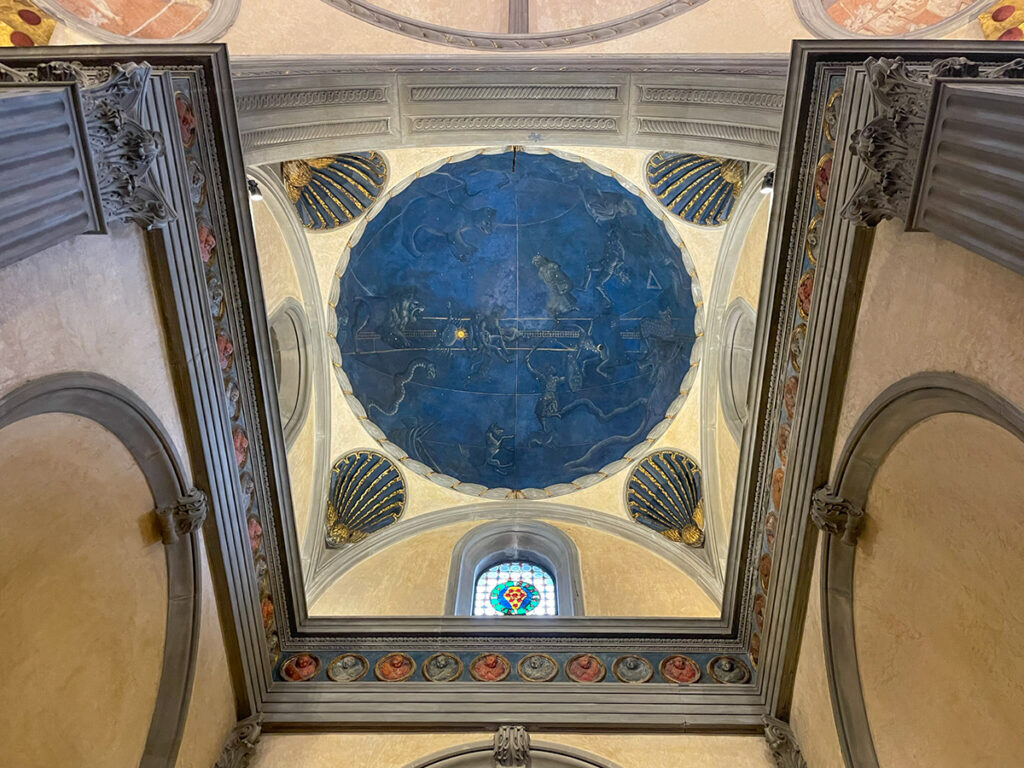
- Time to visit: 30 min – 1hr
- Tickets: Purchase at the Basilica (separate ticket for the library)
Dominating the square, the Basilica of San Lorenzo was the parish church of the Medici family and the burial site of the prominent, mostly male, Medicis.
From the street, San Lorenzo is not much to look at. The exterior of the basilica appears rough and unappealing. This is because it was never finished. It was supposed to be covered by a spectacular façade by Michelangelo, but due to lack of funds and changes in the Medici family’s fortunes, the decorative covering was never added.
The most interesting space in the basilica is the Old Sacristy. The room is almost a perfect cube with semicircular arches and a segmented hemispherical dome. Brunelleschi was a pioneer in using the principles of geometric optical linear perspective in architectural design. And he applied his mathematical knowledge to the design of the Old Sacristy, fusing science and art.
In 1444, Cosimo founded the first public library in Europe – the Laurentian Medici Library. The library was first housed at the Medici palace, but Michelangelo later designed a dedicated space for it adjacent to the basilica. The spectacular library contains over 3,000 manuscripts collected by the Medici family.
Medici Chapels
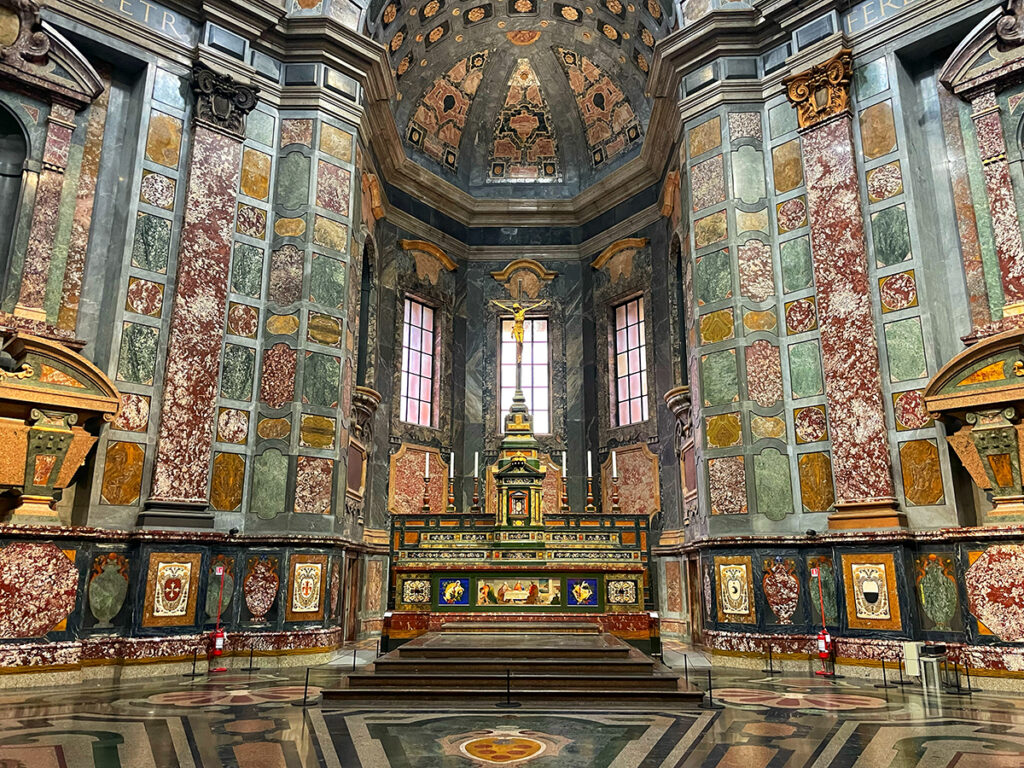
The most opulent part of the San Lorenzo complex is the Medici chapels. Designed by Michelangelo, the chapels lie adjacent to the parish church of the Medici family – the Basilica of San Lorenzo but have a separate entrance. As with everything else, you can purchase your ticket in advance on the B-ticket website – the official website for the State Museums of Florence.
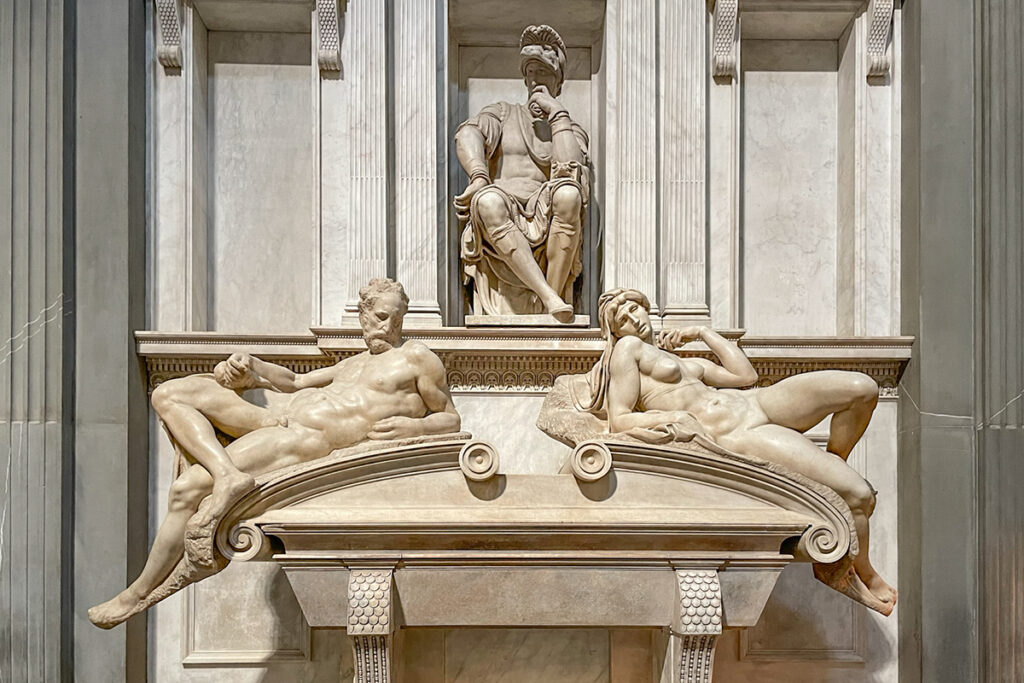
There are two main chapels: the New Sacristy, designed by Michelangelo, where his statues adorn the sarcophagi of prominent Medici family members, and the monumental Chapel of the Princes, strikingly decorated with white, red, and green marble and housing the sarcophagi of the most distinguished (male) Medicis.
Piazza della Santissima Annunziata
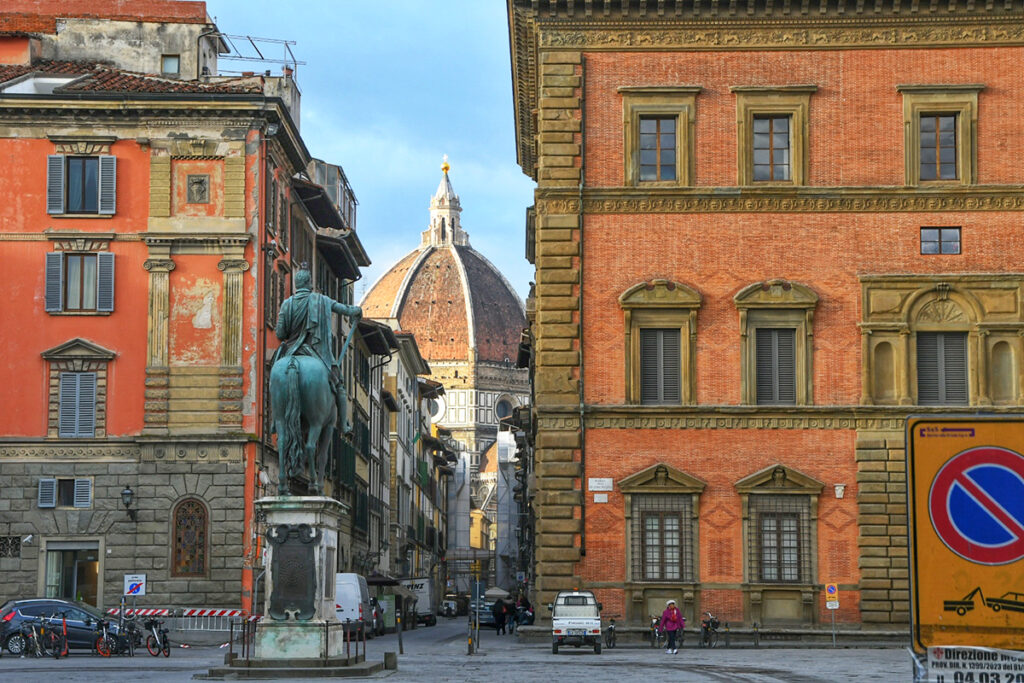
From San Lorenzo Basilica, start making your way back towards the Duomo via Piazza della Santissima Annunziata. This beautiful square is one of the few spaces in Florence designed and built in the Renaissance style, yet it remains largely off the tourist radar.
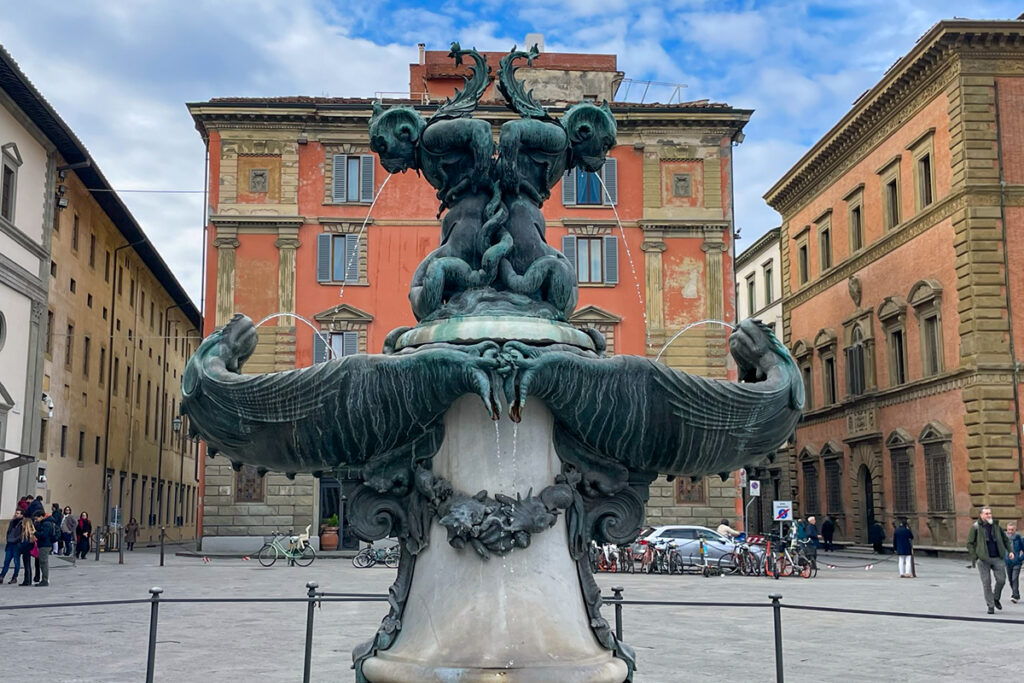
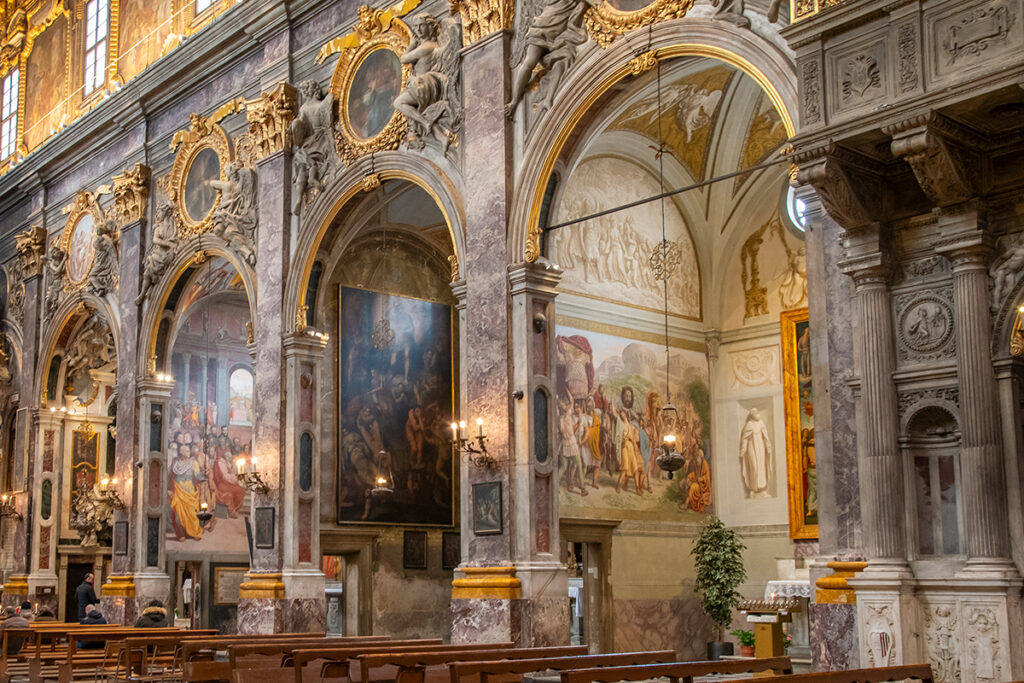
The most important monuments on the square are the Hospital of the Innocents (Ospedale degli Innocenti), originally designed by Brunelleschi as an orphanage (the first one ever built in Europe), and the beautiful church of Santissima Annunziata (Basilica della Santissima Annunziata). Both are free to visit, and there are no queues.
Stroll Along via dei Calzaiuoli
Once you are back at Piazza del Duomo, find via dei Calzaiuoli and follow this short street towards Piazza della Signoria. This pedestrian-only street has been the major thoroughfare in Florence for 2,000 years. Today, the street is lined with upmarket shops and gelaterias.
Piazza della Signoria
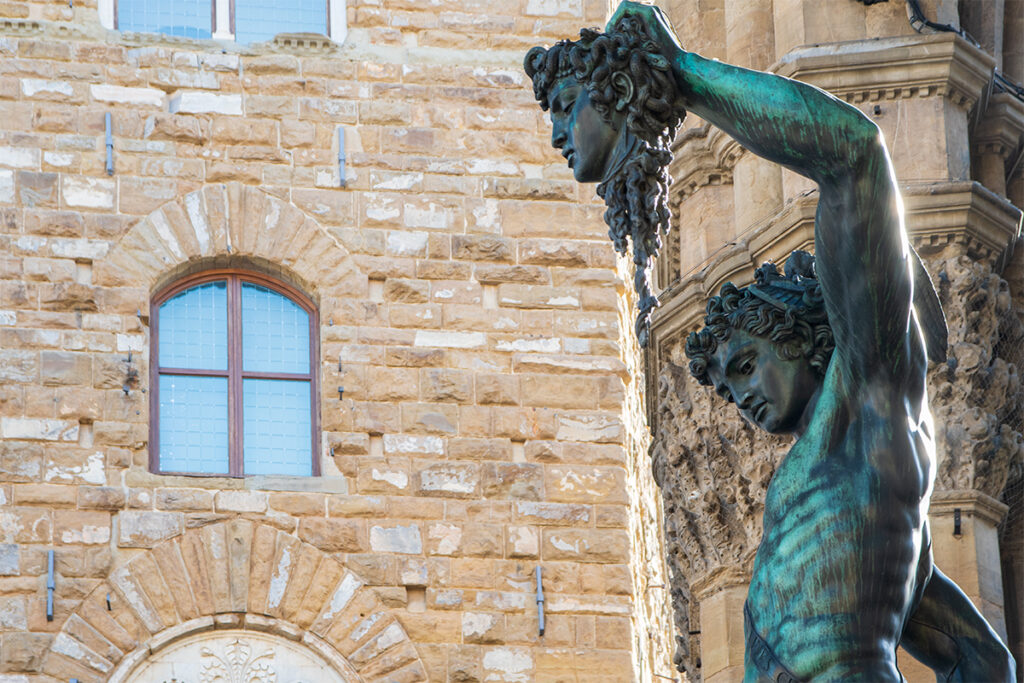
Via Calzaiuoli brings you to the second most important square in Florence, Piazza della Signoria. Dominated by the fortress-like structure of Palazzo Vecchio – the seat of Florentine government since the 13th century, Piazza della Signoria is the civic heart of Florence and an open-air museum of Renaissance art.
To take it all in, get a table at Rivoire on the ground level of one of the palazzos framing the square, order a coffee and some mouthwatering afternoon sweets, and enjoy the view.
Loggia dei Lanzi
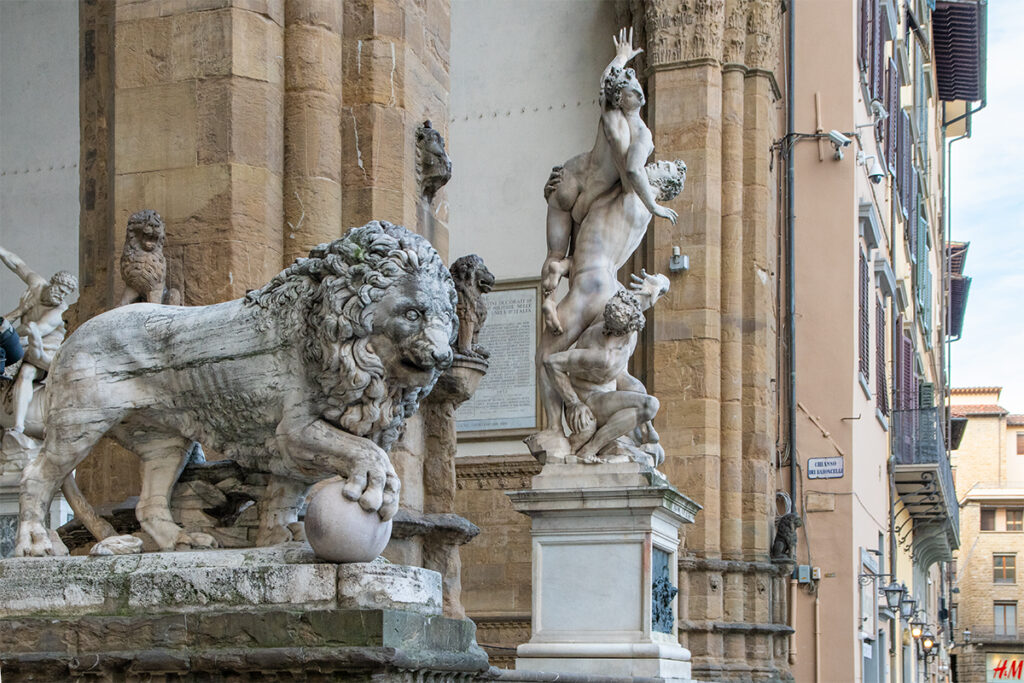
To the right of Palazzo Vecchio is the Loggia dei Lanzi – an open-air sculpture gallery. Despite the morbid themes – rape and murder, the statues at the loggia are magnificent. The most striking piece is Cellini’s magnificent Perseus with the Head of Medusa.
A curious bit of trivia – when you face the Loggia from the steps in front of it, you’ll see two lions flanking the stairs. The one on the left is from the Renaissance, but the one on the right is a thousand years older, dating back to Roman times.
Colossal Statues
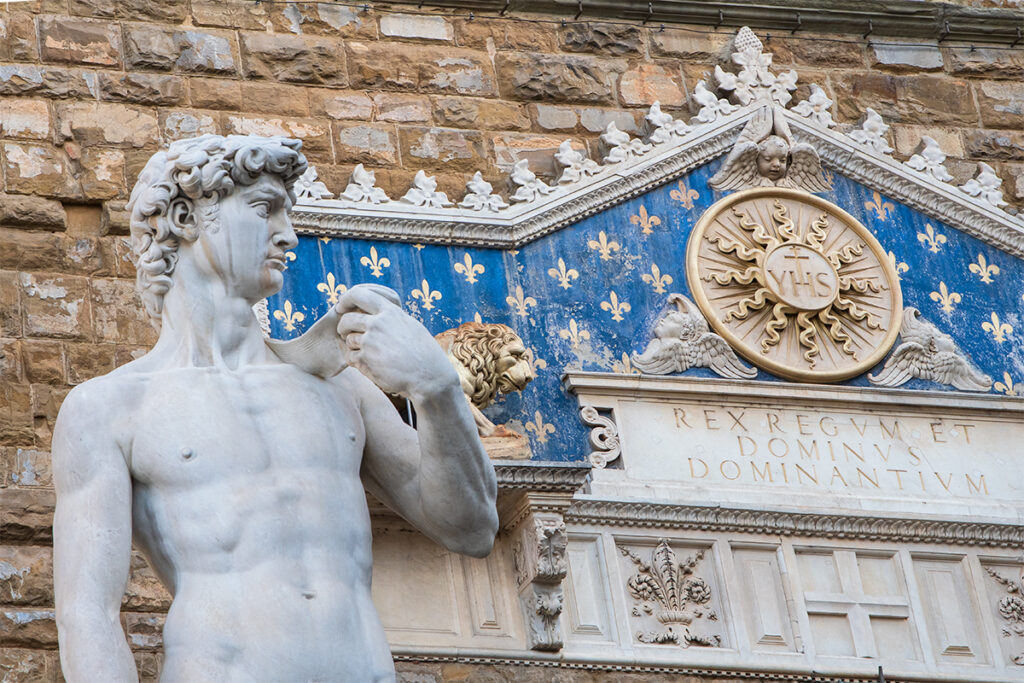
The entrance to Palazzo Vecchio is flanked by two colossal statues: a replica of Michelangelo’s David, the symbol of Florence, and Bandinelli’s Hercules and Cacus. To the left of the palace, another colossal male nude, Neptune, towers over a fountain next to Donatello’s Judith and Holofernes.
Ponte Vecchio
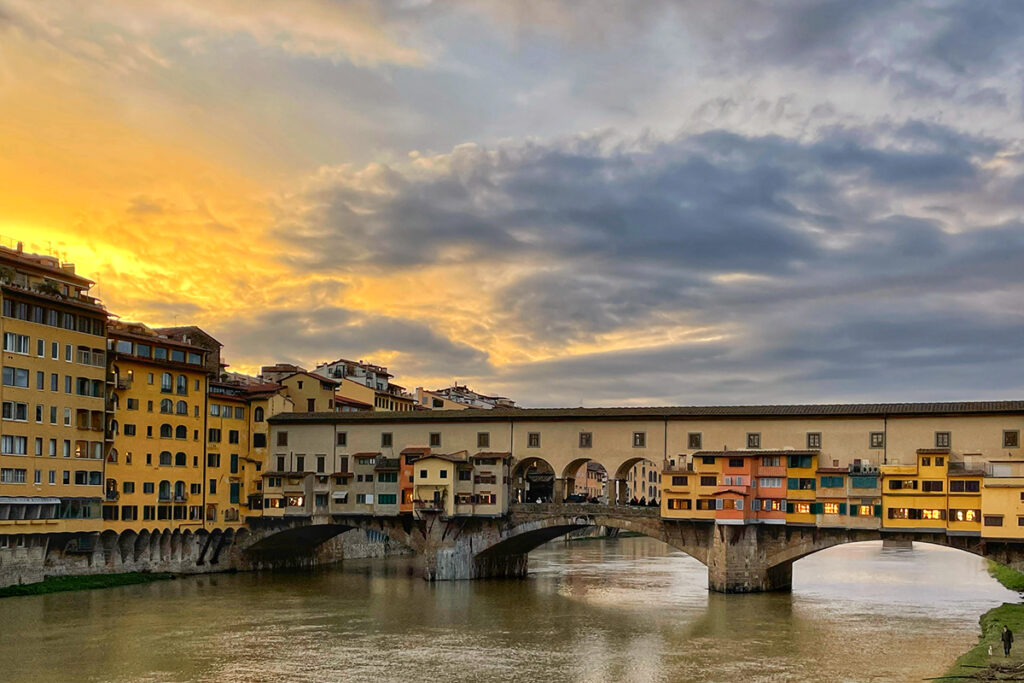
The colourful, shop-studded Ponte Vecchio (old bridge) is one of the most iconic sights in Florence. And it also happens to be a wonderful spot for catching the sunset. So check the sunset time for your dates and either stroll to the bridge before or after dinner. Most restaurants in Florence don’t open until 6 pm for dinner.
The best spot for watching the sunset is the riverbank just below the Uffizi Gallery.
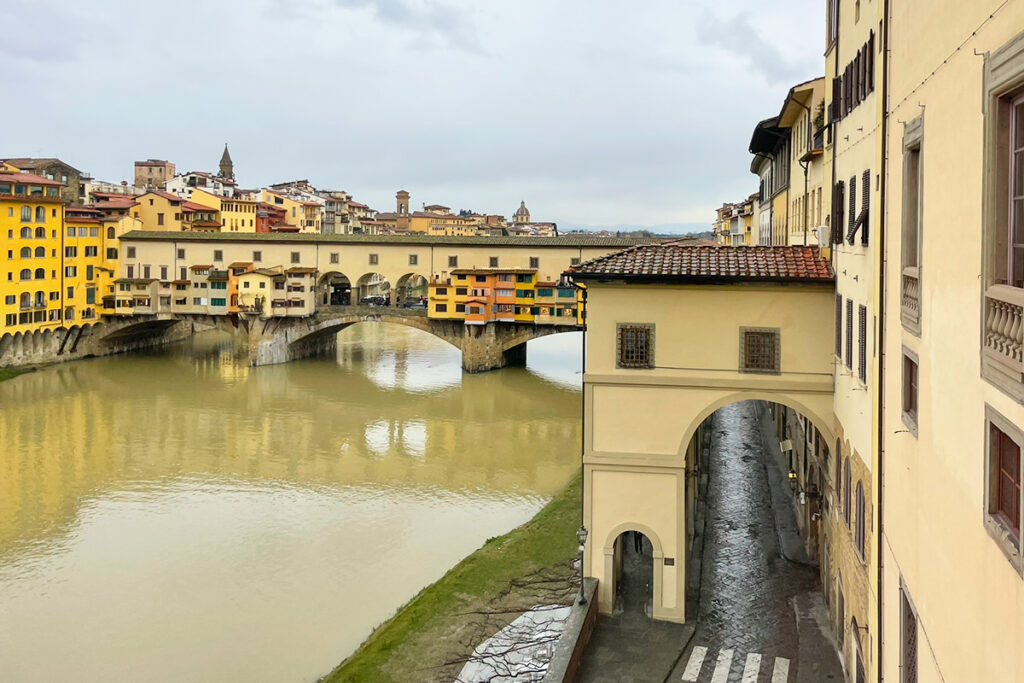
Notice the elevated corridor that runs from the second floor of the Uffizi Gallery across Ponte Vecchio and into the Oltrarno neighbourhood on the other side of the Arno River. This is the famous Vasari Corridor designed in the 16th century by Giorgio Vasari for Cosimo I de Medici.
When the Medici family moved from Palazzo Vecchio to Palazzo Pitti on the southern bank of the river, they commissioned this elevated corridor to be built so that they could easily move between their residence and the administrative offices at Palazzo Vecchio and Uffizi.
While you are here, check out a gorgeous artisan shop, Signum. There are three Signum stores in Florence, but the one at Ponte Vecchio is the most atmospheric. It sells a selection of gorgeous notebooks with hand-made paper, calligraphy sets, art prints and decorative items.
If you have the time, continue walking up the street from the bridge to explore the charming neighbourhood of Oltrarno. This is where you’ll find the best artisan shops in Florence.
Dinner at Antico Ristorante Paoli 1827
To fully immerse yourself into Renaissance Florence, book a table for dinner at the Antico Ristorante Paoli 1827. Paoli is the oldest restaurant in Florence, located in a beautiful Renaissance building that used to be a church. You’ll be dining under a vaulted ceiling, surrounded by stunning frescoes on the walls.
Make your booking as far in advance as possible; this is one of the most popular restaurants in Florence. And once there, don’t miss their tiramisu for dessert.
3 Days in Florence: Day 2
On day 2, take a deeper dive into Renaissance art at the Uffizi Gallery, followed by a visit to Palazzo Vecchio. After lunch, stroll to Florence’s most beautiful church – Santa Maria Novella, and visit the 16th-century pharmacy-perfumery next door. In the afternoon, visit Santa Croce Basilica and then walk to one of the sunset viewpoints across the river.
Uffizi Gallery
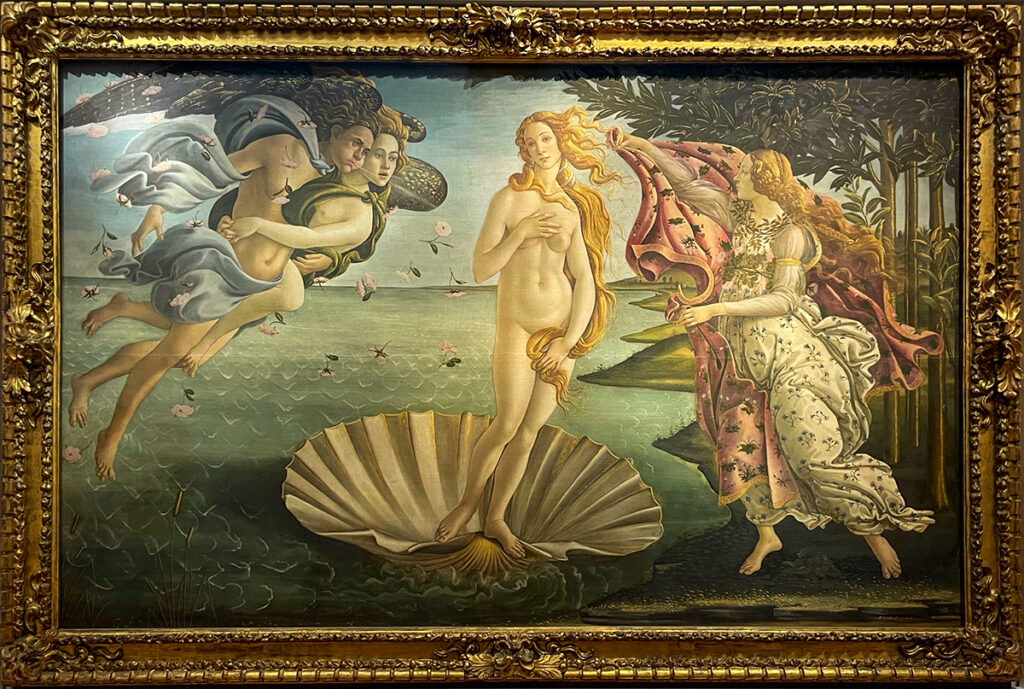
- Time to visit: 1-3 hours
- Tickets: Official Uffizi website
- Priority tickets: Priority Escorted entry
You can’t visit the cradle of the Renaissance and not see the best of Renaissance art. Of all the things to do in Florence in 3 days, a visit to the Uffizi Gallery is a must. The gallery houses some of the world’s most iconic paintings, sculptures, and other art forms. Works by Leonardo da Vinci, Rafael, Botticelli, Michelangelo, and Caravaggio are just a few highlights.
The trick to enjoying the Uffizi Gallery is to visit first thing in the morning before the tour groups arrive. Aim to book your ticket for the first entry – at 8.15 am. This will give you an hour and a half of peace and quiet and, most importantly, unobstructed views of the art.
Tip: If you didn’t opt for Priority Escorted entry, don’t forget to exchange your electronic booking for a ticket. Uffizi courtyard can be confusing with several queues for different things. The ticket office is on your right, if you are looking towards the Arno River. At the far end of the building from the river. Once you get your ticket, join the queue on your left, about halfway along the bulding. If you are visiting at 8.15 am, there isn’t likely to be a general queue yet, but still try to make sure that you are joining the ‘timed entry’ queue for your time slot (it should be quite short).
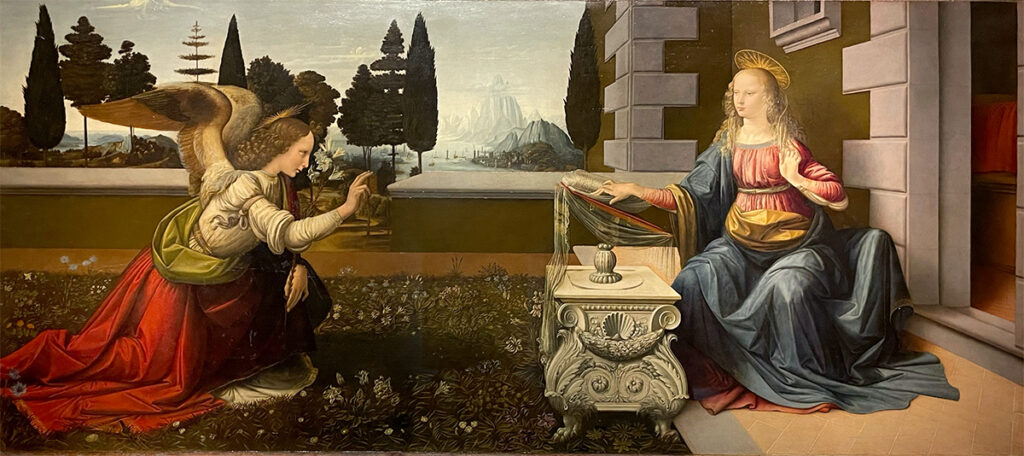
The art collection at Uffizi is immense. However, the gallery layout is quite easy to navigate. When you enter, the signage will guide you upstairs to the second floor, where the rooms are arranged chronologically, from medieval art to the Renaissance.
Towards the end of the hall, you’ll find Botticelli’s Birth of Venus and The Allegory of Spring, da Vinci’s Annunciation, Michelangelo’s Doni Tondo, and Rafael’s Madonna of the Goldfinch.
On the first floor, don’t miss a series of portraits of the most well-known Medici family members and Caravaggio’s Medusa shield.
Palazzo Vecchio
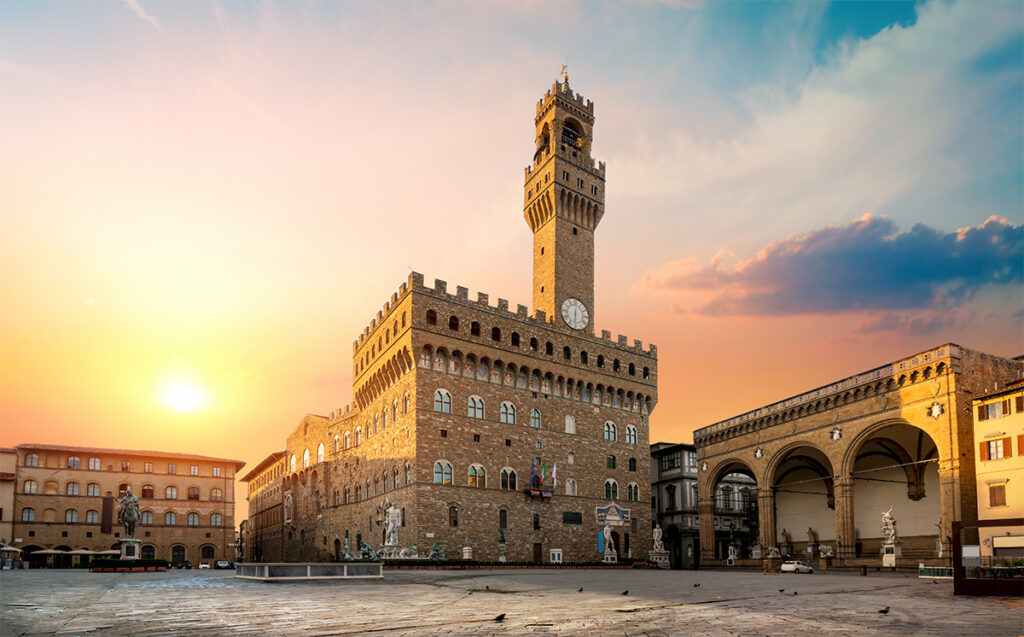
- Time to visit: 1-2 hrs
- Tickets: timed-entry tickets on the Florence Civic Museums website.
- Palazzo Vecchio and Arnolfo Tower tickets only on Tiqets
- Best guided tour: Secret Passages tour
Towering over the southeast corner of the Piazza Della Signoria, Palazzo Vecchio looks more like a fortress than a palace. And that is because when it was built in 1299, security was much more on Florentines’ minds than refined architecture. However, the interior of the palace is anything but rugged. It is exquisitely refined.
From the Hall of the 500, where da Vinci’s painting may still be concealed behind a false wall on which Vasari painted his frescoes, to the exquisitely decorated Leo X Apartments and the Appartments of Elenora, Palazzo Vecchio is the most spellbinding of Medici’s three palaces in Florence.
Apart from the spellbinding decor, the palace hides a network of secret passageways that you can explore on a Secret Passageways Tour. The tour is run by the official Palazzo Vecchio tour guides, who have the keys to unlock all kinds of doors at the palace. If you enjoyed the scene of Robert Langdon disappearing into a secret passage behind an ancient map painting in the Inferno movie, you’ll love this tour.
At the end of the tour, you can remain in the palace for as long as you wish. Among the treasures on display in Palazzo Vecchio, you’ll find Dante’s death mask, Donatello’s Judith and Holofernes and Michelangelo’s The Genius of Victory.
Santa Maria Novella Basilica
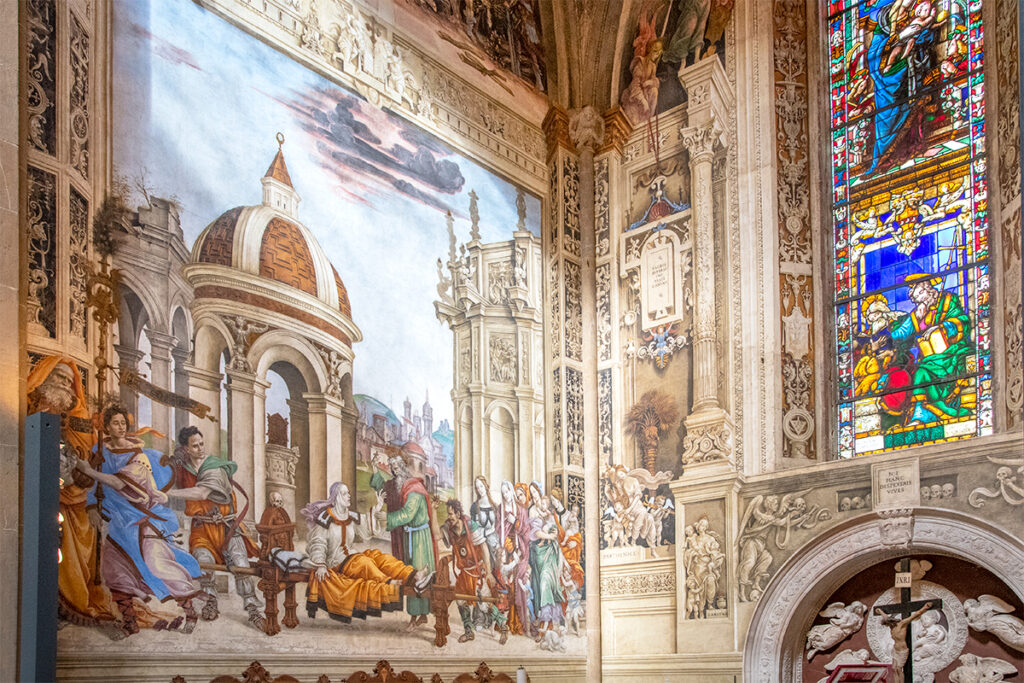
- Time to visit: 30 min to 1hr
- Tickets: Entry with Audio Guide
I find the Santa Maria Novella Basilica (basilica di Santa Maria Novella) to be Florence’s most beautiful church. Over the centuries, its interior has been decorated by works of Giotto, Duccio, Brunelleschi, Botticelli, Masaccio, Ghilrlandaio, Filippino Lippi, Vasari, Paolo Uccello and even Michelangelo.
The entire history of the Florentine Renaissance can be traced in this church, and its frescoes have inspired many artists, including da Vinci, who worked on the cartoon for his Battle of Alighieri in this church while hosted by the monks.
My favourite part of the church is the Chapel of Filippo Strozzi to the right of the altar, with Filippino Lippi’s amazing frescoes, his last works, in fact. There are also crucifixes by Giotto (at the centre of the nave) and by Brunelleschi (in the Gondi Chapel), Holy Trinity by Masaccio, Ghirlandaio’s frescoes in the Tornabuoni Chapel, and Brunelleschi’s pulpit from which Galileo was denounced by the church.
There is so much art by so many artists in Santa Maria Novella that it may be difficult to interpret without a guide. I highly recommend getting an audio guide with your entry ticket.
Santa Maria Novella Perfumery
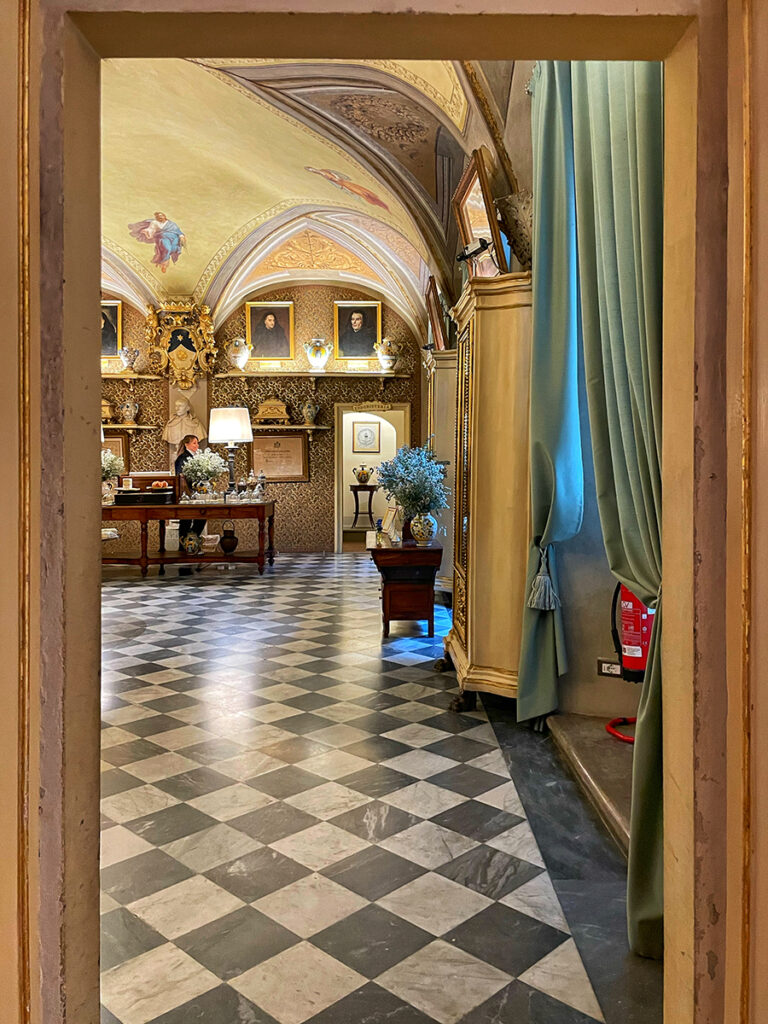
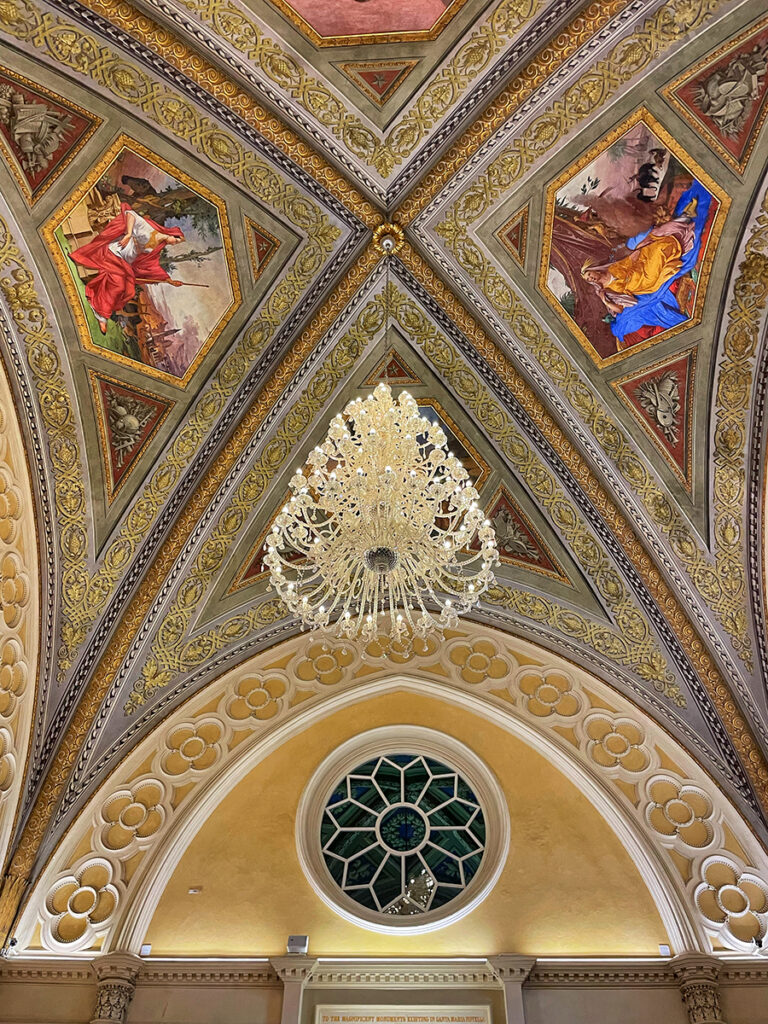
Adjacent to the courtyard of Santa Maria Novella church is the most beautiful shop in Florence – Officina Profumo-Farmaceutica di Santa Maria Novella. It was established as a pharmacy by the Dominican friars living at the monastery, and by 1381, the friars were selling rose water extract as a disinfectant, thought to be particularly useful during the plague. The friars grew their medicinal plants in their kitchen garden.
The present pharmacy dates to 1612, and it is decorated with exquisite Renaissance frescoes and a vaulted ceiling. When Catherine di Medici became the queen of France, the friars created a special perfume for her that is still sold in the store.
Surrounded by such beauty and heavenly scents, you may not be able to resist buying something from their incredibly inviting and picturesque line-up.
Tip: keep in mind that there are 3 branches of the shop in the city, so make sure to go to the original pharmacy on via dell Scale near Santa Maria Novella church.
Basilica of Santa Croce
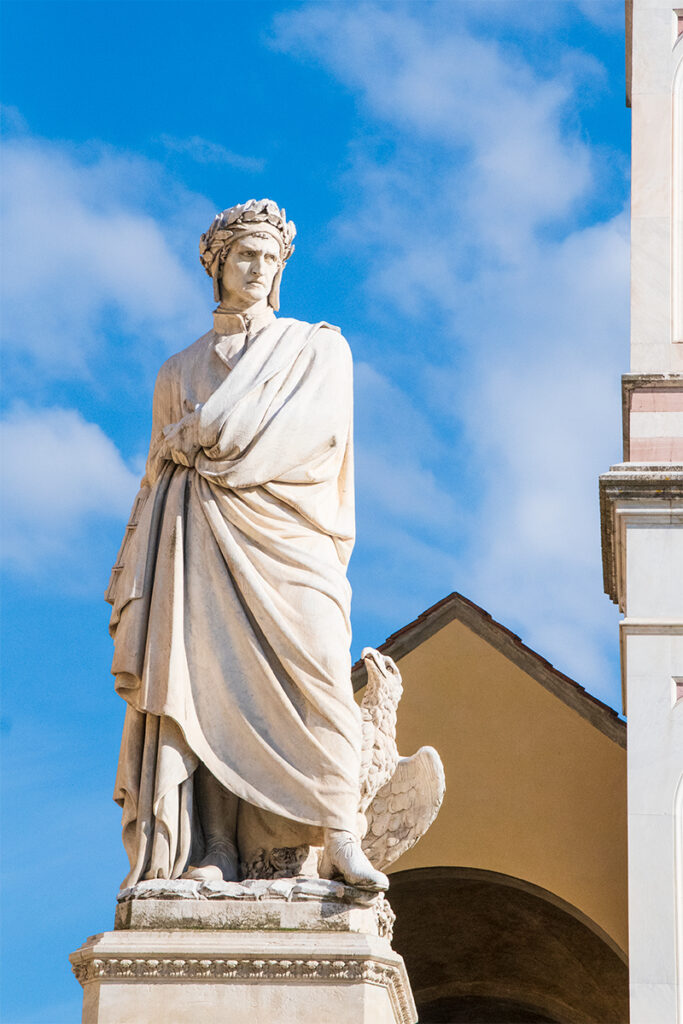
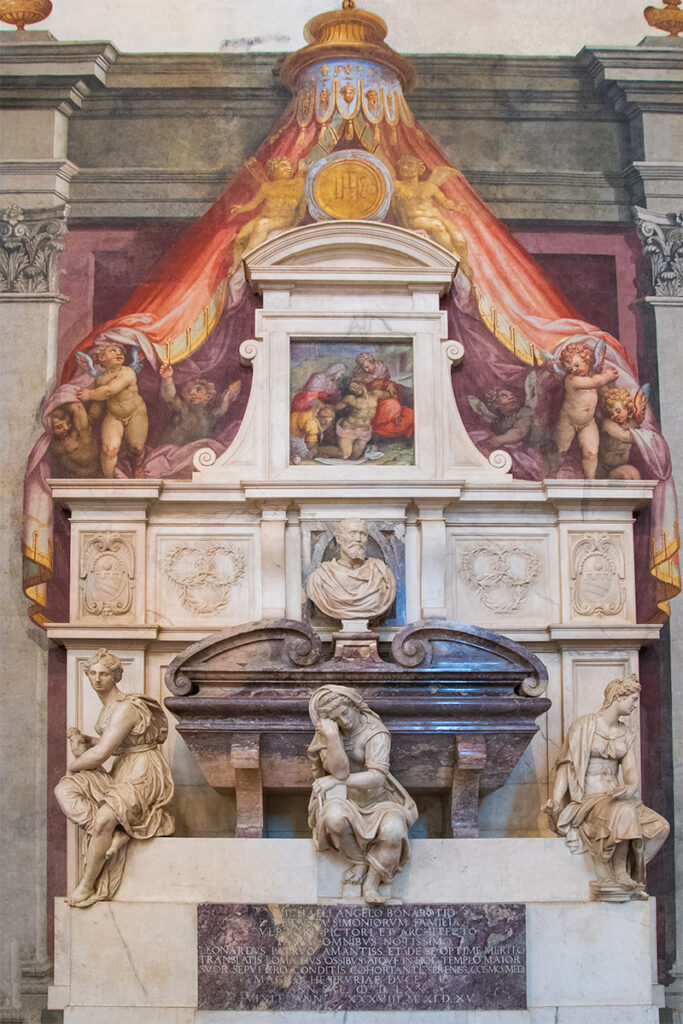
- Time to visit: 30 min to 1hr
- Tickets: Timed-entry tickets
- Best guided tour: Santa Croce Basilica tour
While the Basilica of Santa Maria Novella is a Dominican church, the Basilica of Santa Croce (Basilica di Santa Croce) is a Franciscan basilica dedicated to St Francis of Assisi.
Today, it is famous for being the burial place of some of the most illustrious Italians, including Michelangelo, Machiavelli, Galileo, Rossini, and an honorary sarcophagus of Dante, even though the poet’s remains are buried in Ravenna, where he died. Such famous dead inspired the basilica’s other name – the Temple of the Italian Glories.
Unsurprisingly, the church is decorated with Renaissance masterpieces, including frescoes by Giotto, a crucifix by Donatello, a chapel designed by Brunelleschi, and Michelangelo’s tomb designed by Vasari.
It takes some working out to figure out which sarcophagus is who’s inside the church, and it’s a good idea to take a guided tour of the basilica. With a guide, not only will you know what you are looking at, but you will also learn about some of Florence’s most distinguished personalities and their historical context.
Sunset Viewpoints
Florence lies in the valley, surrounded by mountains. And the best place to watch a sunset in Florence is from one of the hills. You have two options, and both are about a 30-minute walk from the Duomo, across the Arno River and up a steep hill.
Sunset view from Piazzale Michelangelo
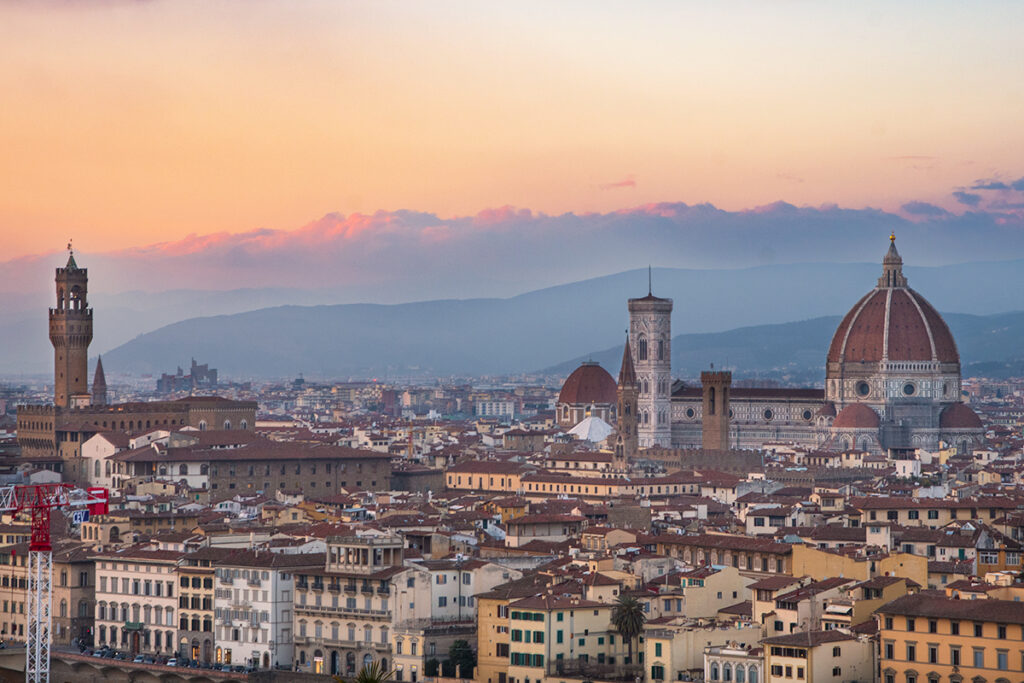
If you enjoy the party atmosphere, head to Piazzale Michelangelo. It is a large square overlooking the city, with a replica of Michelangelo’s David and various food, drink, and souvenir stalls. There are usually street performers entertaining the mostly young crowds while they wait for the sunset.
View from Abbazia di San Miniato al Monte
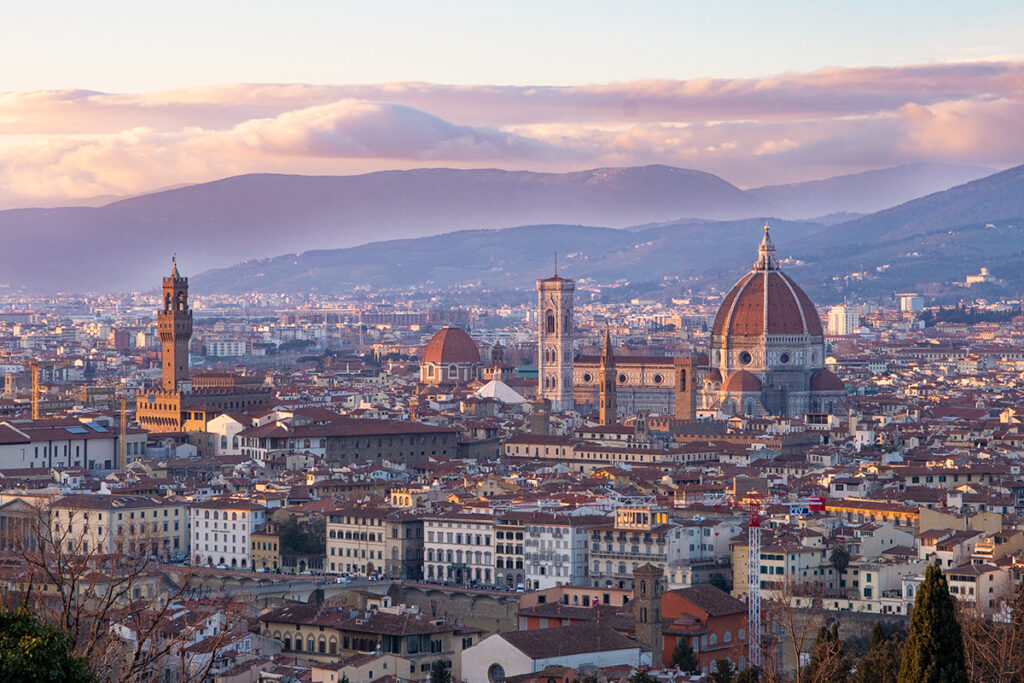
If the sight of an excited crowd makes you want to run the other way, go to Abbazia di San Miniato al Monte instead. The view here is almost the same, and instead of a party crowd, there is a beautiful medieval church here that you can visit before the 6.30 pm service. You can visit the service too and listen to the monks’ soulful singing, but you won’t be able to walk around the church during the service.
3 Days in Florence: Day 3
On your third day in Florence, head across the Arno River to the Oltrano neighbourhood and explore the Medici Palace (Palazzo Pitti), the sprawling Boboli Gardens, the most famous chapel in Florence, an open-air market, and some of the best artisan shops in the city.
Pitti Palace
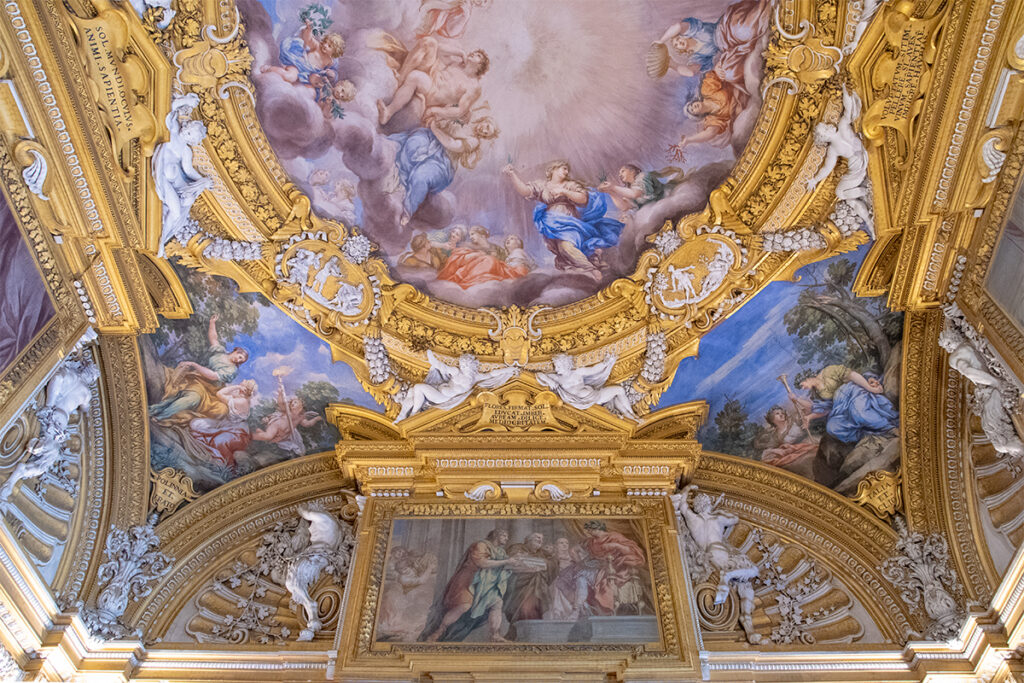
- Time to visit: 2 hrs
- Tickets: Consider a combined ticket with Uffizi Gallery and Boboli Gardens.
- Alternatively, purchase just the Pitti Palace entry tickets.
- Best Tour: Pitti Palace and Palatine Gallery Ticket and Tour
In 1550, Cosimo I de Medici and his wife Eleanor of Toledo moved the Medici court from Palazzo Vecchio to Palazzo Pitti on the southern bank of the Arno River to enjoy the fresh air of the Boboli Gardens. It is the largest and the most lavish Medici palace in Florence. In later centuries, the Habsburg-Lorraine dynasty occupied the palace, which succeeded the Medici in 1737, and the first Kings of unified Italy from 1865.
The entire first floor of the expansive palace is taken up by The Palatine Gallery and Royal and Imperial Apartments. These over-the-top halls house the Medici art collection, including the largest selection of paintings by Raphael in the world and works by Titian, Tintoretto, Caravaggio and Rubens.
Boboli Gardens
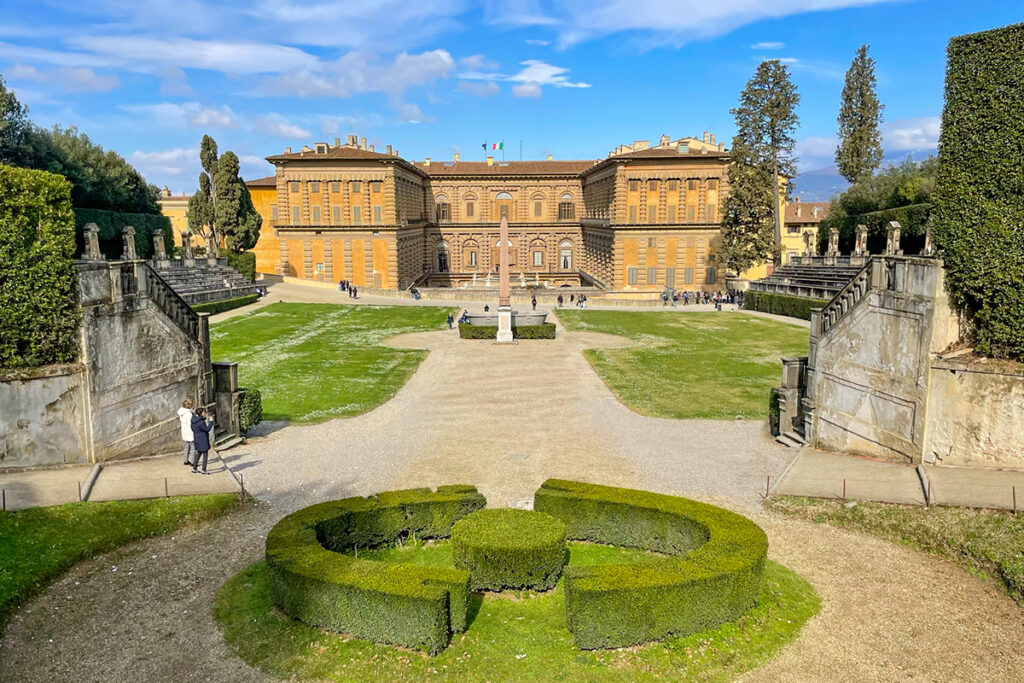
- Time to visit: 1 hr
- Tickets: Uffizi website or on GetYourGuide.
- Consider a combined ticket with the Uffizi Gallery and Pitti Palace.
The palace opens up on the sprawling Boboli Gardens that take up the entire hill from the palace to the city wall. There is enough Renaissance art in the gardens to venture on a leisurely treasure hunt. Right outside the palace is the stunning Buontalenti Grotto with artificial stalactites and stalagmites and Michelangelo’s four Prisoners statues set to support the grottos’ walls (the original statues are housed in Gallerie dell’Academia).
Pitti Palace is enormous. As are Boboli Gardens. If you are concerned about missing great works of art, it is best to join a tour of the palace and the gardens.
But if you are not too worried about learning what is what and simply want to walk through a sumptuous palace, the most economical way of purchasing a ticket is to get a combined Uffizi Gallery, Pitti Palace and Boboli Gardens ticket. Just make sure to hold on to it between your visits to each place. If you lose the ticket, you’ll have to pay for a new one-off ticket, and you’ll have to queue up for it.
Lunch at Santo Spirito Markets
In Oltrarno, you’ll experience a much more authentic side of Florence. And there is no better place to enjoy the atmosphere of Oltrarno than the beautiful and tranquil Piazza Santo Spirito.
Located in a quiet corner of Oltrarno, in front of the Basilica of Santo Spirito, the square is framed with early Renaissance architecture and has distinct neighbourhood vibes. The restaurants that line the square have ample outdoor seating, and most of the patrons are clearly local residents.
While most days you can find a few stalls selling trinkets and antiques, on the second Sunday of every month, the piazza turns into a buzzing market – the perfect treasure spot.
Basilica Santo Spirito
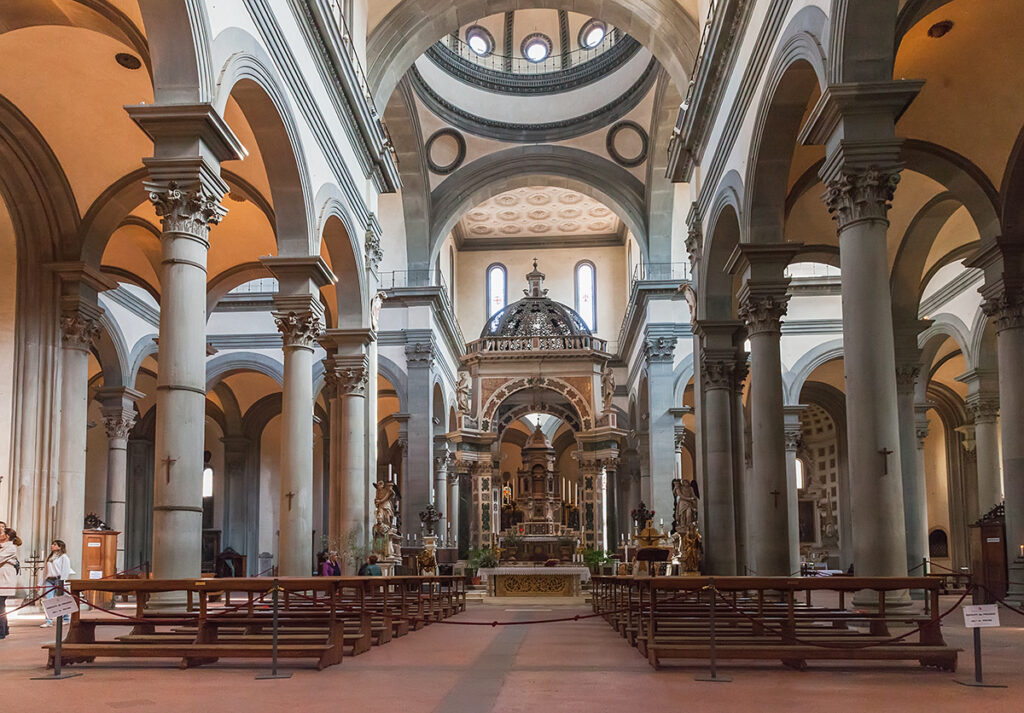
- Time to visit: 30 min
- Tickets:
Facing Piazza Santo Spirito, the Basilica of Santo Spirito (Basilica di Santo Spirito) is the last work of the great Renaissance architect Filippo Brunelleschi, of the Duomo Dome fame.
The exterior of the basilica appears rather plain – you can easily walk past without noticing it, which is what makes the basilica a lovely hidden gem. The interior of the church, however, is quite an impressive site.
The space is divided into three aisles by rows of soaring columns. The geometrical symmetry of the church is set off by the uniform colours of its walls and the arched ceiling. Creamy whites, dark greys and earthy oranges accentuate the symmetry and create a particularly harmonious appearance.
In 1492, the basilica provided refuge to the young Michelangelo after his patron Lorenzo the Magnificent’s untimely death. The friars allowed Michelangelo to study human anatomy by dissecting the corpses in the convent’s hospital. As a gesture of gratitude, he sculpted a wooden crucifix for the altar. After missing for over three centuries, the crucifix returned to the basilica and can now be viewed in the octagonal sacristy.
Brancacci Chapel
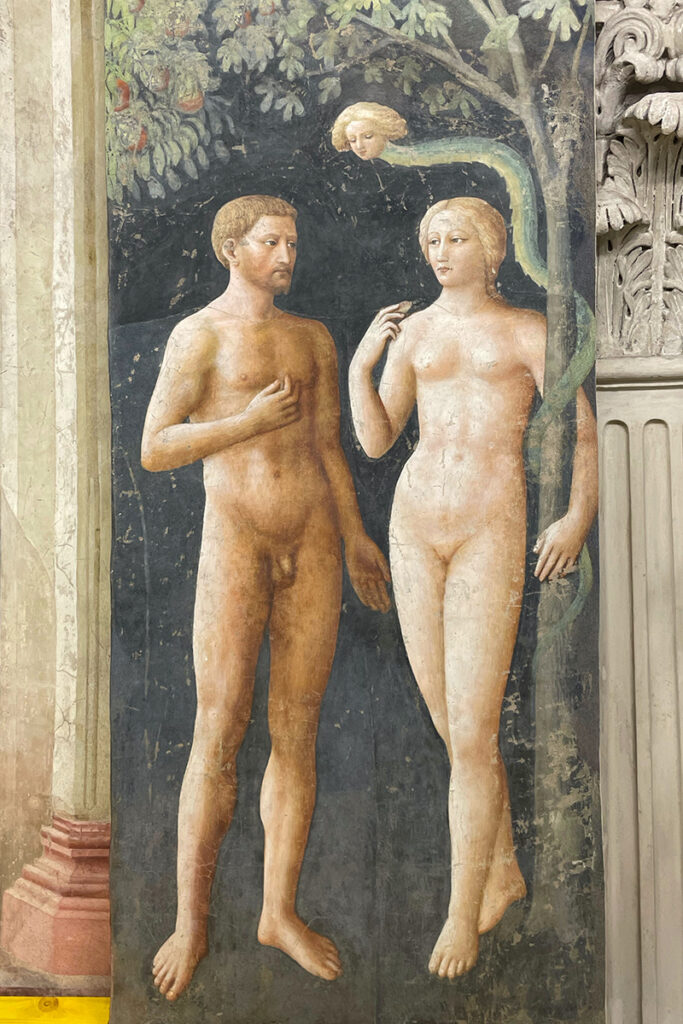
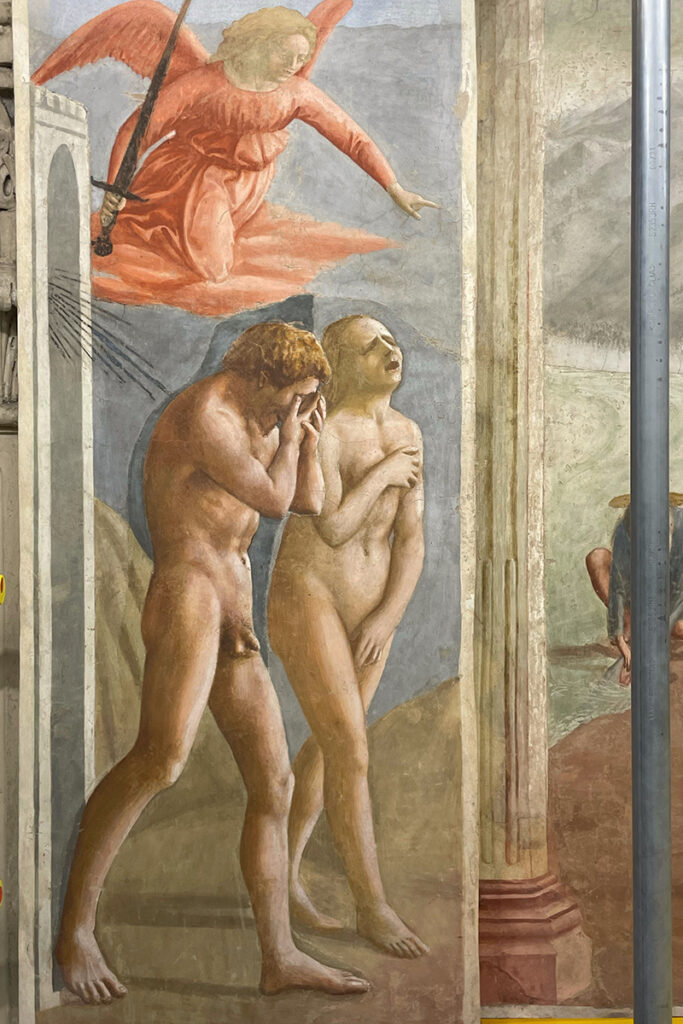
- Time to visit: 30 min to 1hr
- Tickets: Florentine Civic Museums website
- Best tour: Guided tour in English
This stunning chapel in the Church of Santa Maria del Carmine in Oltrarno was considered a training school for Renaissance artists. Both Michelangelo and da Vinci studied Masaccio’s frescos and his use of light to define the human body.
Unlike the flat light in medieval art, Masaccio painted the scenes in his frescos as if they were illuminated by a single source of light, like the chapel’s window. By accentuating the play of light and shadow, he gave his painting a natural and realistic appearance – a technique that da Vinci later mastered like no other artist.
The frescos in Brancacci Chapel (Cappella dei Brancacci) were initially designed by Masolino da Panicale, but he was shortly called away, and his 21-year-old student Masaccio did most of the painting. Although Masaccio was also called to Rome before he could finish the chapel, and Filippino Lippi completed the remaining sections.
Visit artisan shops
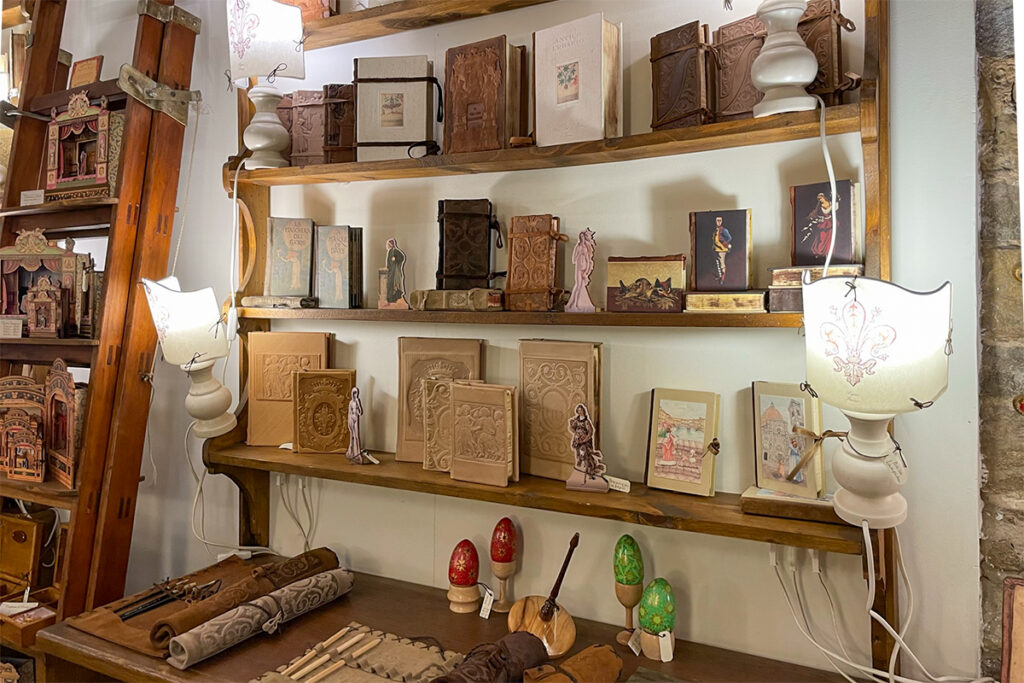
Oltrarno neighbourhood is where you find the best artisan shops in Florence, selling everything from high-quality leather goods to home decor to exquisite handicrafts.
There are two little gems in the same alleyway, just across the road from Palazzo Pitti. Le Telerie Toscane specializes in high-quality Tuscan linens: tablecloths, bed linens, cushion covers, and tea towels. Next door, Casa de la Stampa is a lithography workshop that has been operated by the same family for generations. Their most striking pieces are those printed on centuries-old paper from family notebooks and hand-written letters.
Right by Ponte Vecchio, on the Oltrarno side, A. Carnesecchi is the best store for buying quality Tuscan ceramics and pottery.
Stroll the Streets of Florence
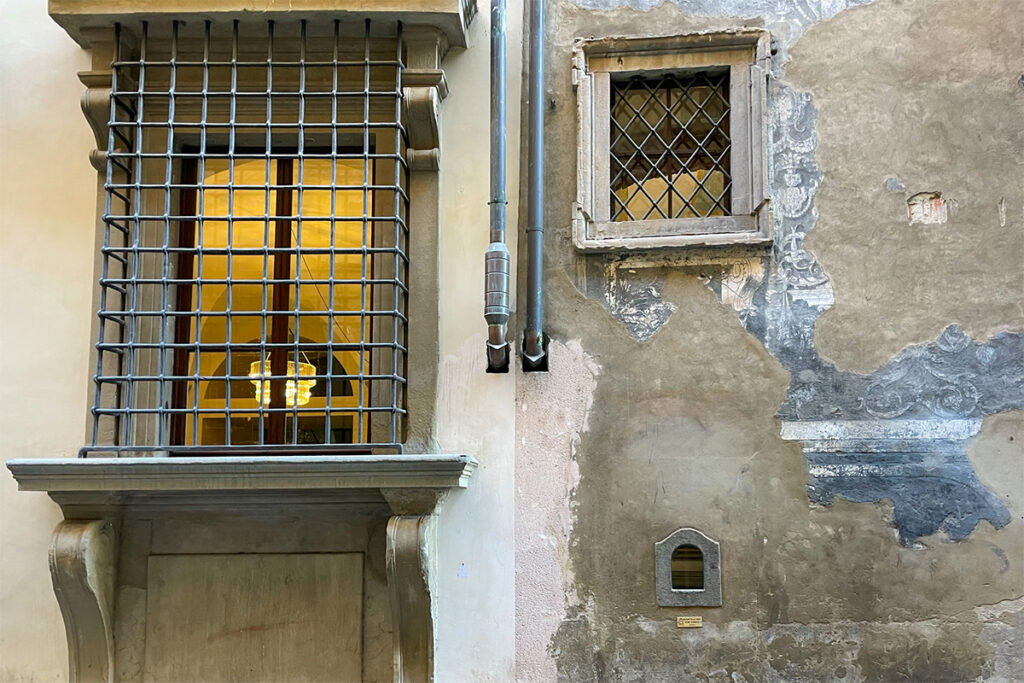
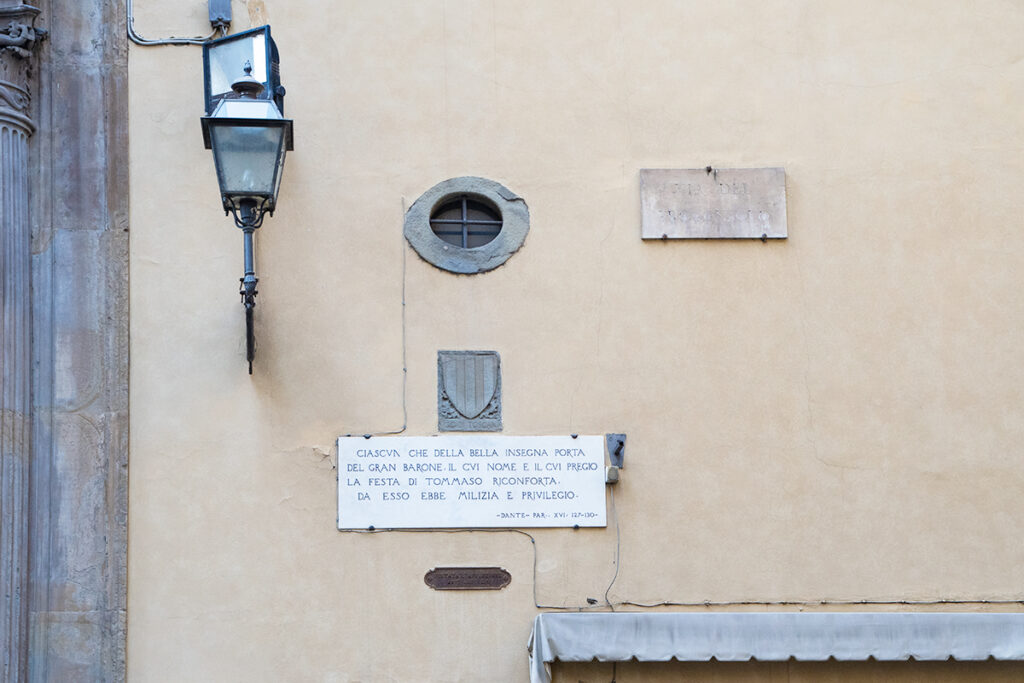
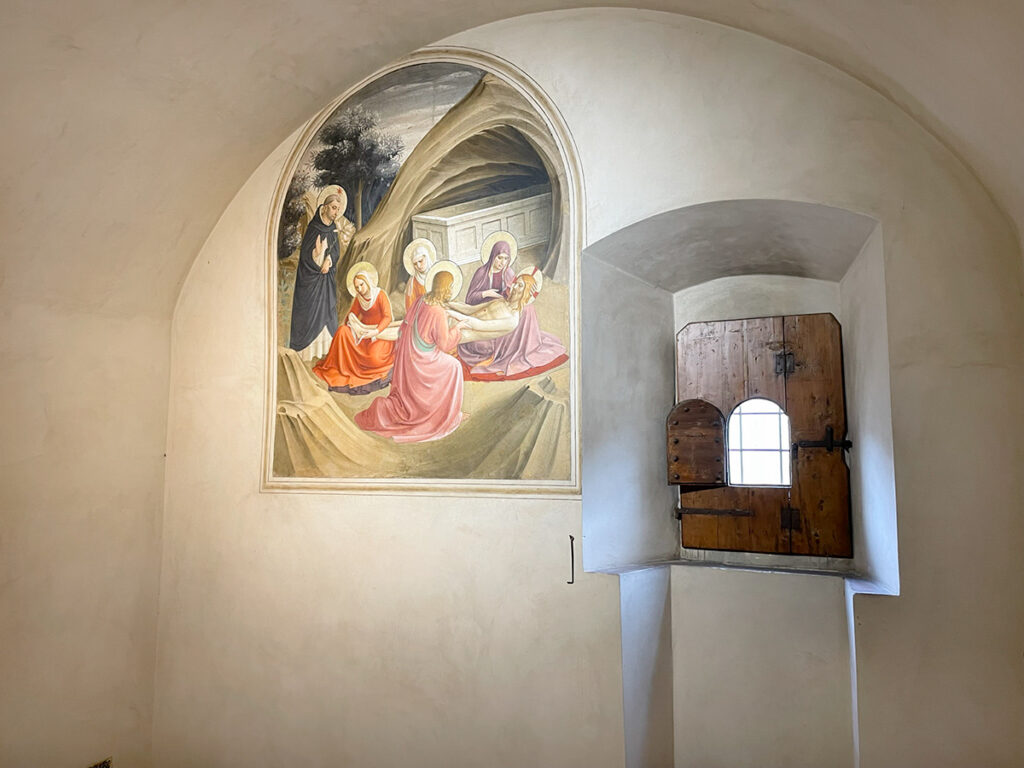
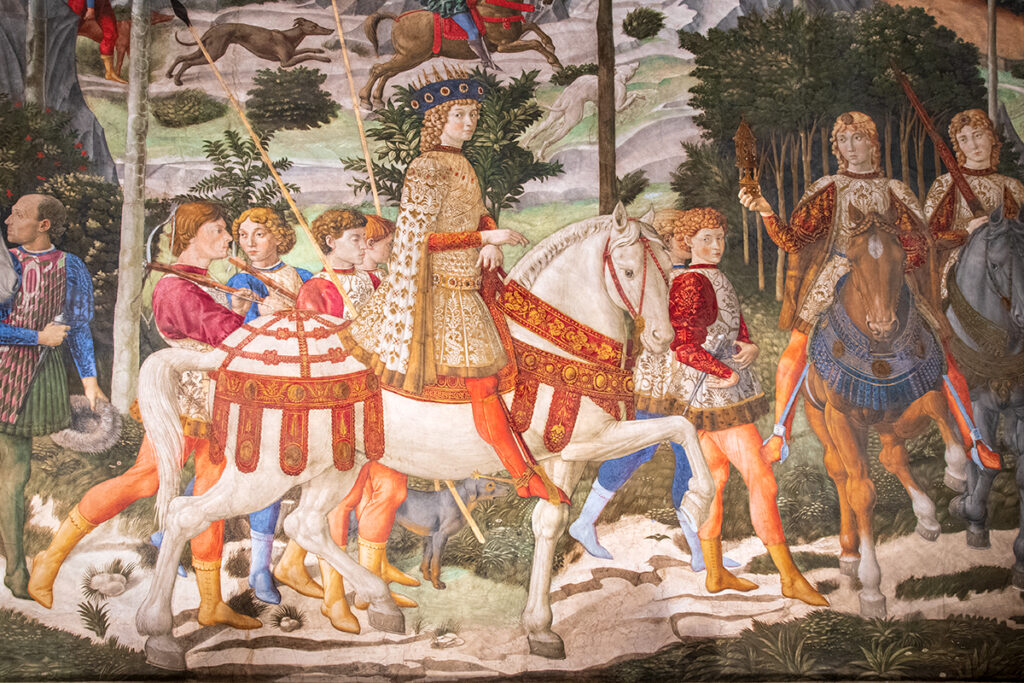
Spend your last afternoon in Florence, wandering the city’s charming streets and re-visiting your favourite squares and neighbourhoods. Keep an eye out for Florence’s adorable wine windows and plaques with passages from Dante.
If you want to see more art, consider visiting the Bargello Museum, where you’ll find some of the most famous statues of the Florentine Renaissance, including Donatello’s bronze David, considered to be the first male nude statue of the Renaissance. Or explore San Marco Monastery in the old Medici Quarter to admire Fra Angelico’s frescoes in the monks’ cells.
Or perhaps visit the exquisite Chapel of the Magi in Medici-Ricardi Palace and spot the Renaissance cats on Gozzoli’s famous frescoes or visit Dante’s house to learn more about Italy’s most famous poet.
Finish your 3 days in Florence with a traditional Tuscan meal in one of the city’s charming trattorias. Some of the most popular options are Trattoria 13 Gobbi, Buca Lapi, and Trattoria Cammillo.
How to Get to Florence
Florence is an easy city to reach. You can fly to Florence airport, which is just over 9 km away from the historic city centre (a 20-min taxi ride).
However, the most convenient way of getting to Florence is by high-speed train. Driving & parking in Florence can be a chaotic nightmare, and the high-speed trains are faster and more relaxing than flying. Direct trains from Roma Termini depart every 30 minutes, taking just over 1.5 hours.
The easiest way to book train tickets in Italy is via Omio app. You can show your electronic tickets to the conductor in the app – no need to print anything. And you’ll have all your train tickets in the same place regardless of what train network you travel with.
More on Exploring Italy
- Renaissance Cats in Florence – A Feline Lovers Guide to Florentine Renaissance Art
- 3 Days in Florence – Exploring the Cradle of the Renaissance
- 2 Days in Florence: Detailed and Flexible Itinerary & Tips
- 1 Day in Florence Itinerary – the Best of the Italian Renaissance
- Things to Do in Florence in Winter and Why Visit in Winter
- Leonardo da Vinci in Florence: In the Footsteps of the Renaissance Master
- Guide to Visiting Palazzo Vecchio: Must-see Art and Hidden Gems
- Medici Florence – a Self-Guided Walk in the Cradle of the Renaissance
- 18 Weekend Breaks in Italy: Top Destinations to Visit and Things to Do
- Quo Vadis – Assisi B&B Where Comfort Meets Medieval Charm

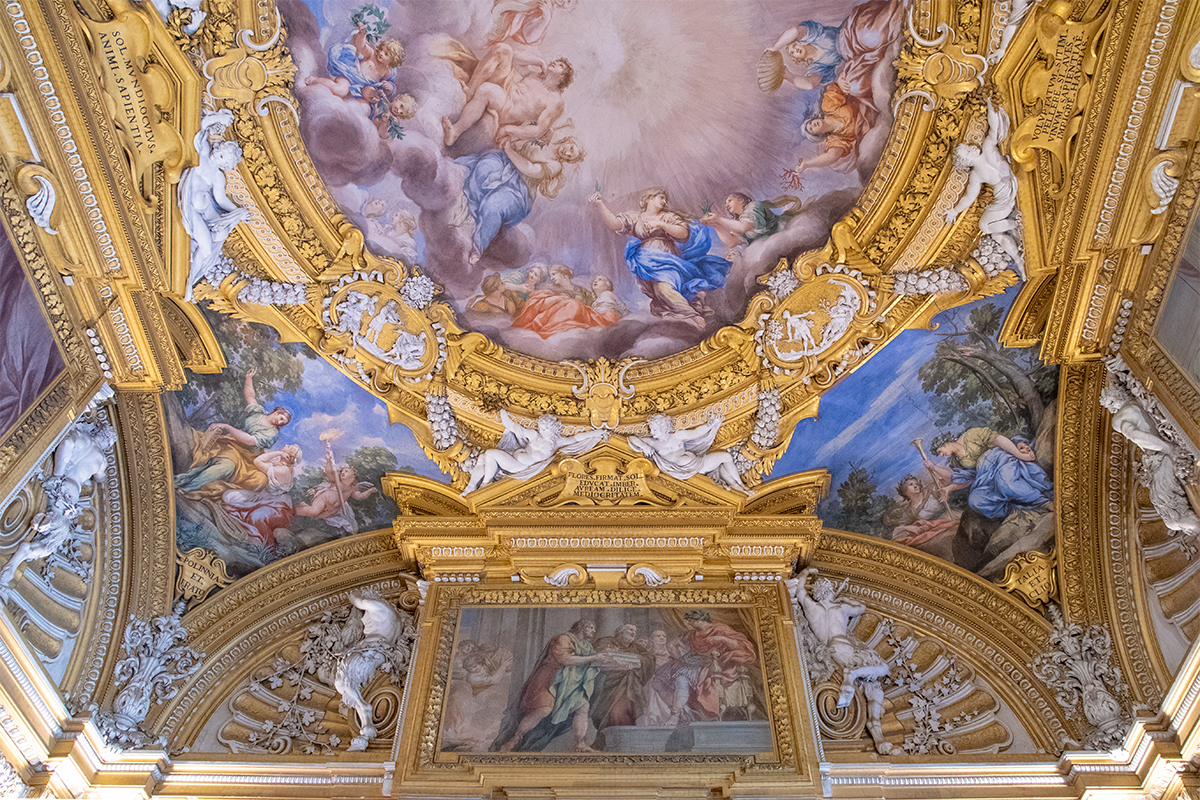
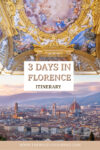
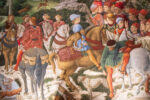
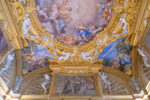
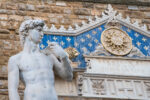
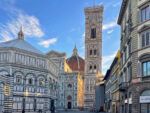
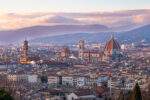
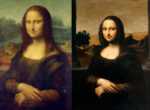

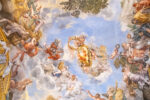
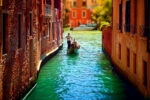
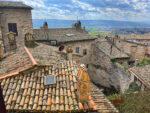
I visited Florence many years ago but I really didn’t see and do as much as I wish I had! Need to go back and this plan would be perfect 👌🏼
Florence is a beautiful city that’s perfect for anyone who loves history and culture. After seeing that stunning shot of the sunset on Ponte Vecchio, I would love to visit.